Tags :: Family

Paddington in Peru is pleasant, underachieving nonsense
The decency and goofy sweetness of the King films continue in Paddington in Peru, though the broader moral and social themes are lost in the quest adventure plot.

An Elemental misstep: Does Pixar still need — or benefit from — anthropomorphic fantasy?
What if the four elements had feelings? Pixar filmmaker Peter Sohn’s gentle, compassionate storytelling may have something to offer family audiences … if he can break away from what has become a rut in Pixar thinking.
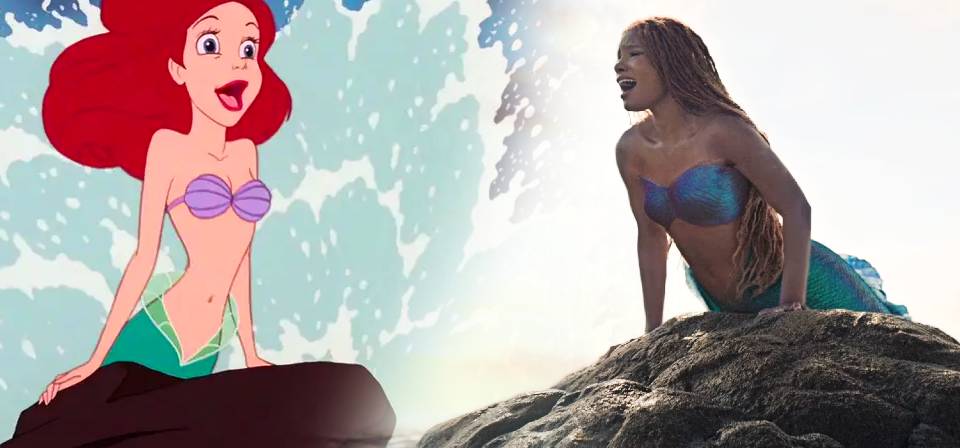
A deep dive: The Little Mermaid then and now
There’s something profoundly melancholy about Disney returning, in its present state of creative exhaustion and corporate decadence, to The Little Mermaid — the nucleus from which the entire Disney renaissance exploded, in a way along with everything that has followed.

Lightyear is an anti–space opera for an anti-heroic age
It pains me to say this: If Lightyear is Andy’s Star Wars, what an impoverished childhood Andy had.
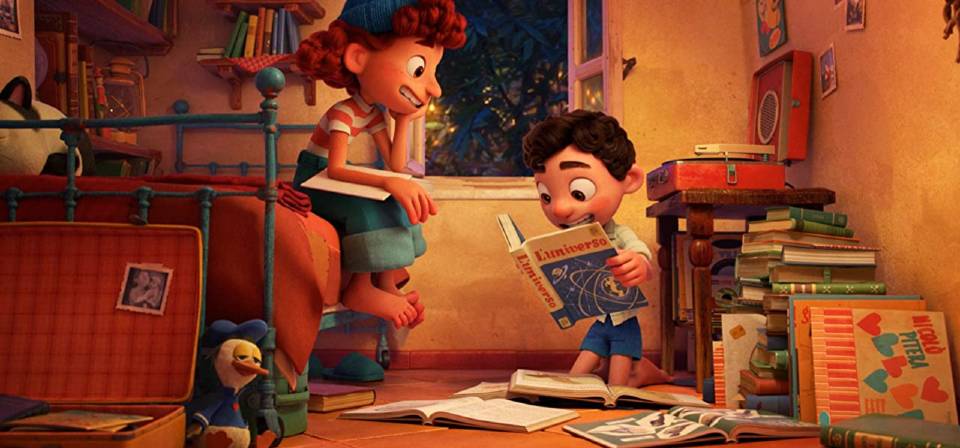
Luca (2021)
In Pixar’s Luca, a gentle, overtly Miyazaki-esque coming-of-age period piece struggles under the heavy weight of iron-clad Disney/Pixar formula requirements and story beats. The charming elements work well enough to carry the film, but only just.
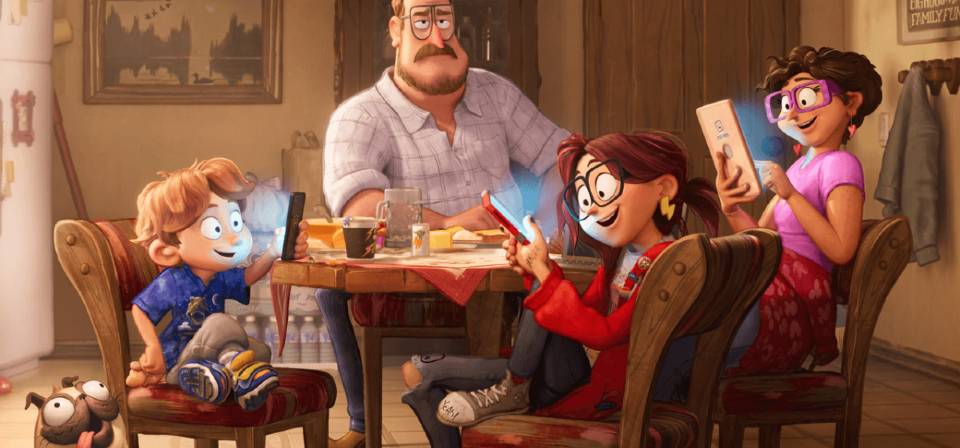
The Mitchells vs. the Machines (2021)
In some ways The Mitchells vs. the Machines harks back to Cloudy With a Chance of Meatballs. Most obviously, it’s another goofy, rollicking techno-apocalypse centered on a bumpy parent-child relationship between an awkward, gifted youngster and a handy but technophobic dad.

Raya and the Last Dragon (2021)
If Disney’s Raya and the Last Dragon seems familiar, that might be because … well, because of echoes of a lot of things, really.
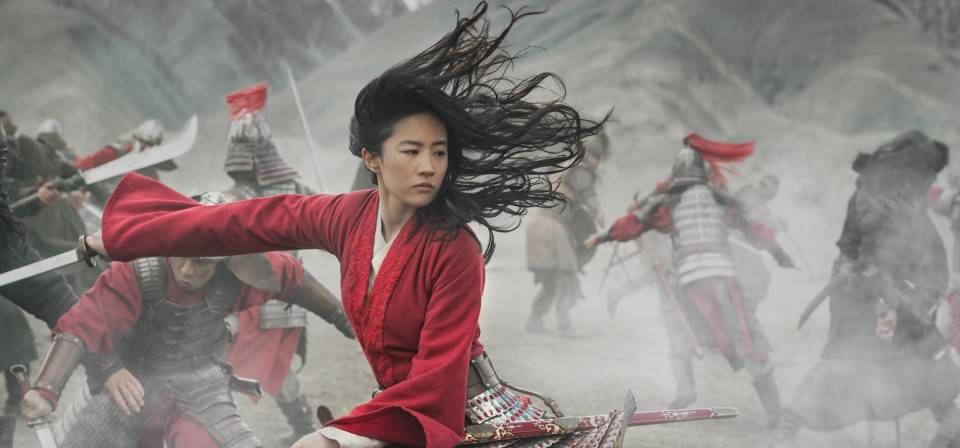
Mulan (2020)
At this point it seems pretty clear that the kiss of death, creatively speaking, for Disney’s new line of live-action/CGI remakes is a Broadway musical.
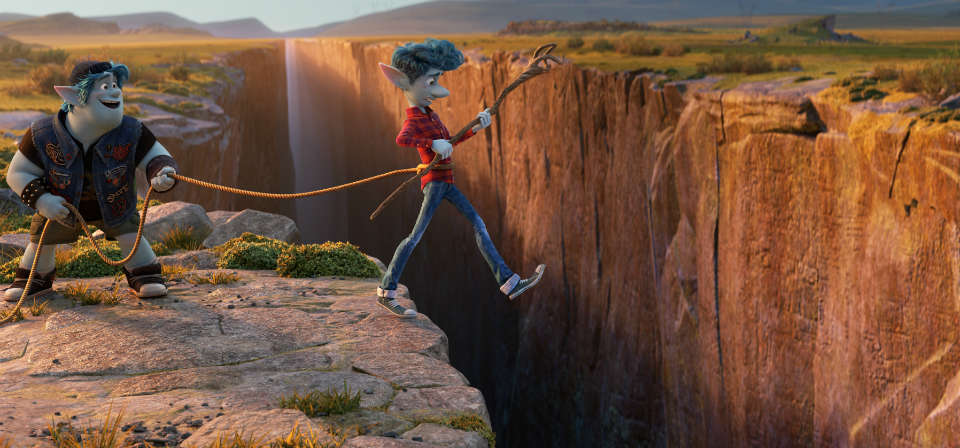
Onward (2020)
Pixar’s movies tend to play as metaphors for the creative rise and fall of Pixar itself. When someone says “Maybe this place isn’t as adventurous as it used to be,” it’s hard not to hear an echo of the filmmakers’ voices.
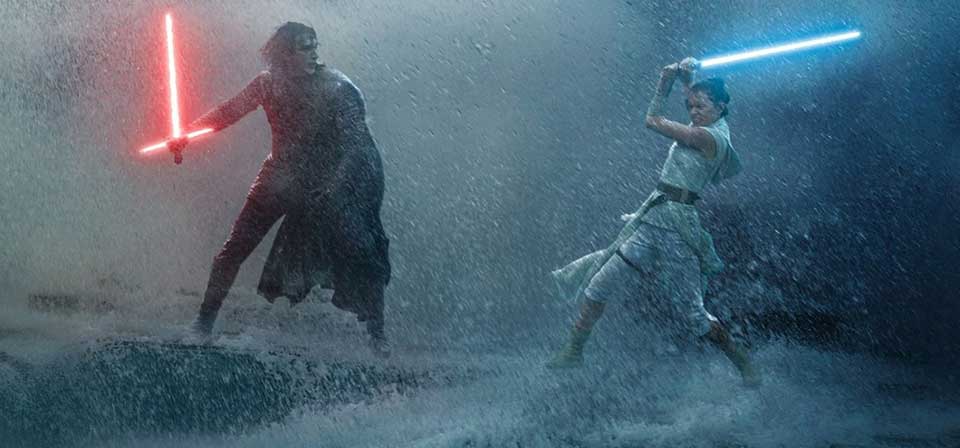
Star Wars: Episode IX – The Rise of Skywalker (2019)
Let’s face it, they could play John Williams’ ominous “Imperial March” over scenes of Uncle Deadly from the Muppets lobbing Green Goblin pumpkin-bombs at Scrat the saber-squirrel (I mean, they literally could, legally, and you could watch it on Disney+ forever and ever), and many of us would still feel emotions stir.
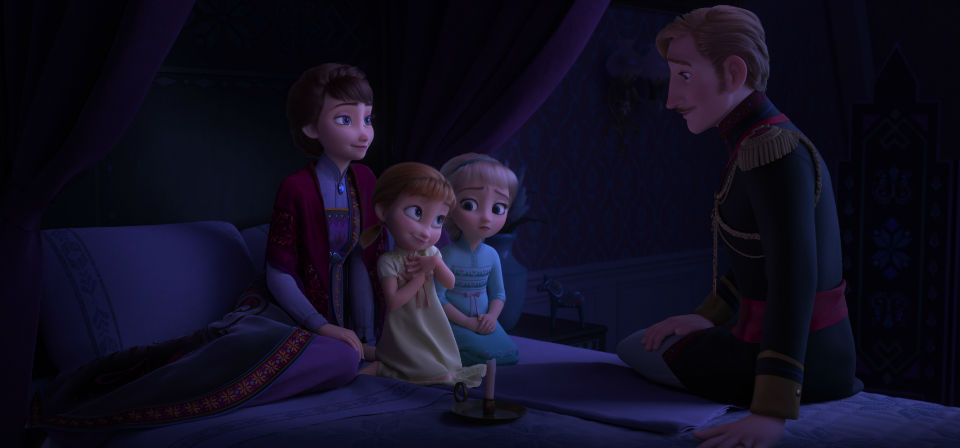
Frozen II (2019)
Anna and Elsa’s relationship is a major improvement on the first film, but in almost every other way this sequel is lost in the woods.
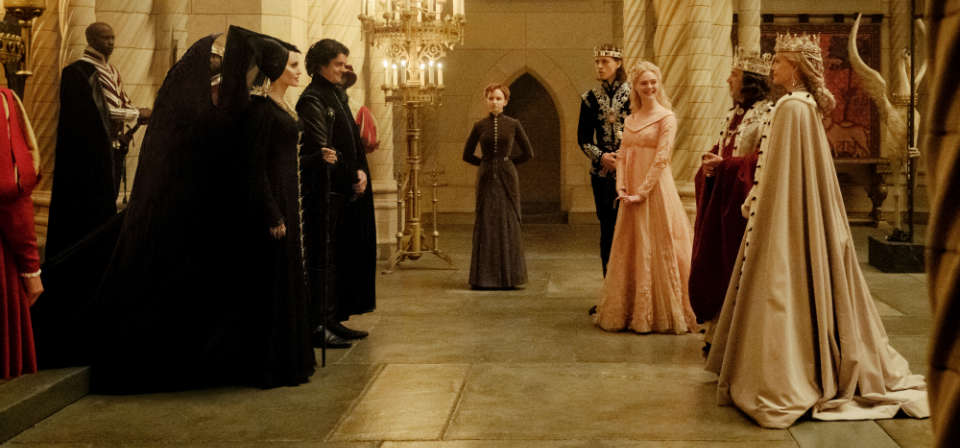
Maleficent: Mistress of Evil (2019)
It’s tempting to suppose that Maleficent: Mistress of Evil opening in the wake of Columbus Day isn’t a coincidence.
![Toy Story 4 [video]](/uploads/articles/toystory4-vid.jpeg)
Toy Story 4 [video] (2019)
For the first time, Pixar has made a Toy Story movie that adds nothing essential to the arc of the previous films. It’s still worth seeing.
![The Secret Life of Pets 2 [video]](/uploads/articles/secretlifeofpets2.jpeg)
The Secret Life of Pets 2 [video] (2019)
It’s come to the point where the mere sight of the Illumination logo makes me think “lazy and scattershot.”
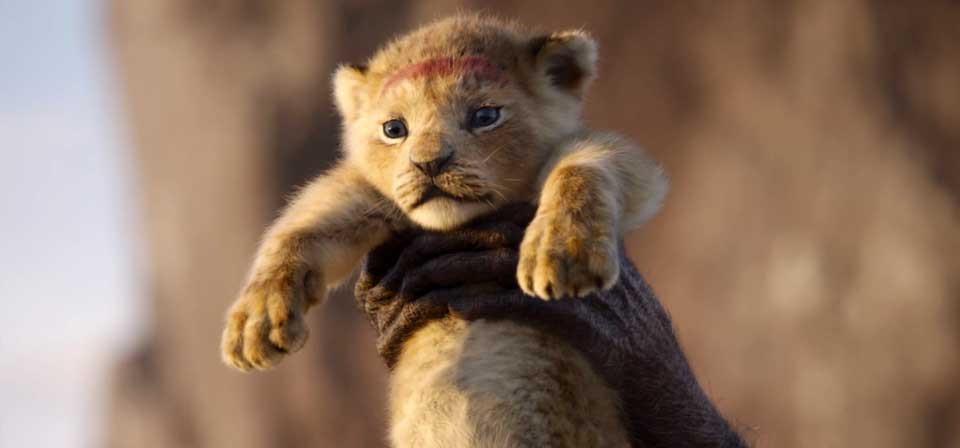
The Lion King (2019)
Alas, the mission wasn’t to improve The Lion King, only to mount it as realistically as possible. Favreau wasn’t hired as a creative, but as a taxidermist.
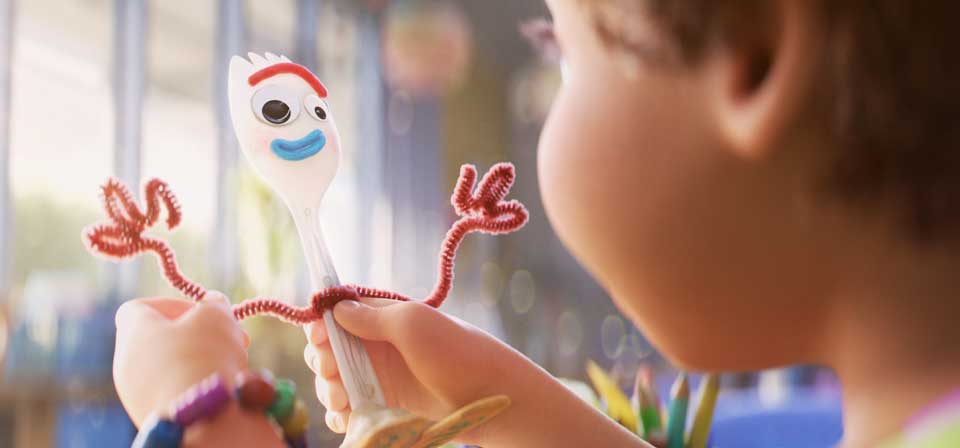
Toy Story 4 (2019)
Toy Story 4 does not continue the story of the first three films, but casts about for new things to do in this world with the sprawling cast of characters in Bonnie’s orbit, most of whom once revolved around the now-absent figure of Andy.
![A Dog’s Journey [video]](/uploads/articles/dogsjourney.jpeg)
A Dog’s Journey [video] (2019)
Who is the target audience for Precious Moments from hell, or at least from a bad country song?
![Pokémon Detective Pikachu [video]](/uploads/articles/pokemon-detective-pikachu.jpeg)
Pokémon Detective Pikachu [video] (2019)
When they announced The Lego Movie, this is basically the movie I thought we were going to get.

Aladdin (2019)
It’s the story you know already, almost exactly. They say the lines and sing the songs, the same songs, almost exactly. It’s a good story and they’re good songs. There are no spoilers in this review because how could there be?
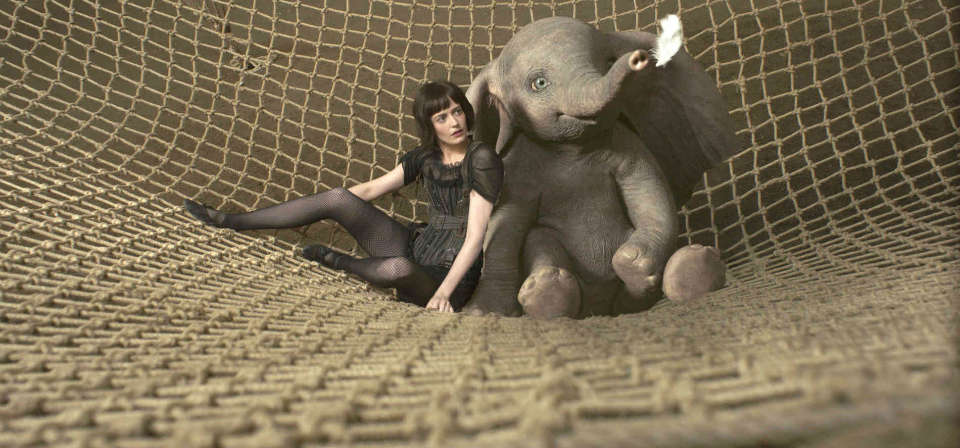
Dumbo (2019)
The Disney nostalgia train rumbles on with Tim Burton back at the throttle — not quite throttling the iconic tale of the flying baby elephant, but only barely rising to the challenge, sort of like Casey Junior struggling to clear that daunting hill.
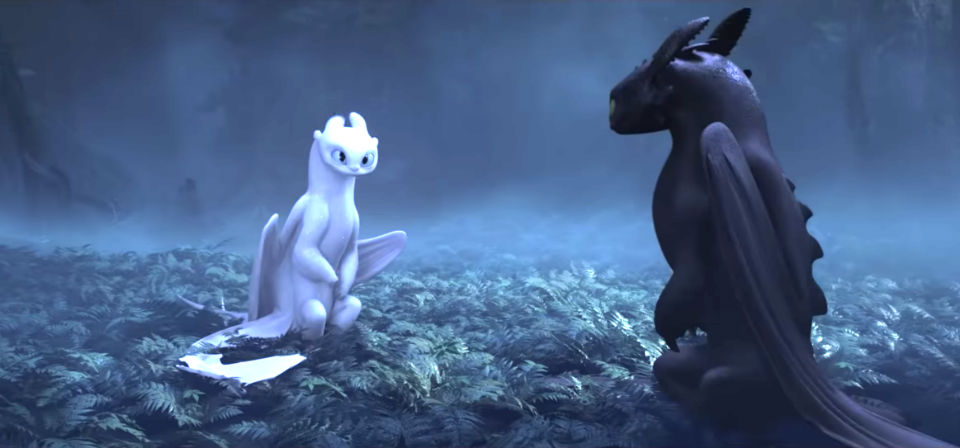
How to Train Your Dragon: The Hidden World (2019)
The two sequels greatly expand the world and the mythology of the original Dragon. Yet our hero’s personal self-development was pretty much complete at the start of Dragon 2.
![Spider-Man: Into the Spider-Verse [video]](/uploads/articles/spiderman-into-the-spider-verse-vid.jpg)
Spider-Man: Into the Spider-Verse [video] (2018)
Chris Miller and Phil Lord, Chris Miller and Phil Lord / Do whatever Chris Miller and Phil Lord do.
Can they swing from a thread? / No they can’t, they’re Hollywood filmmakers.
![Fantastic Beasts: The Crimes of Grindelwald [video]](/uploads/articles/fantasticbeasts2-vid.jpg)
Fantastic Beasts: The Crimes of Grindelwald [video] (2018)
I swear I am not making any of this up. What else can I say?
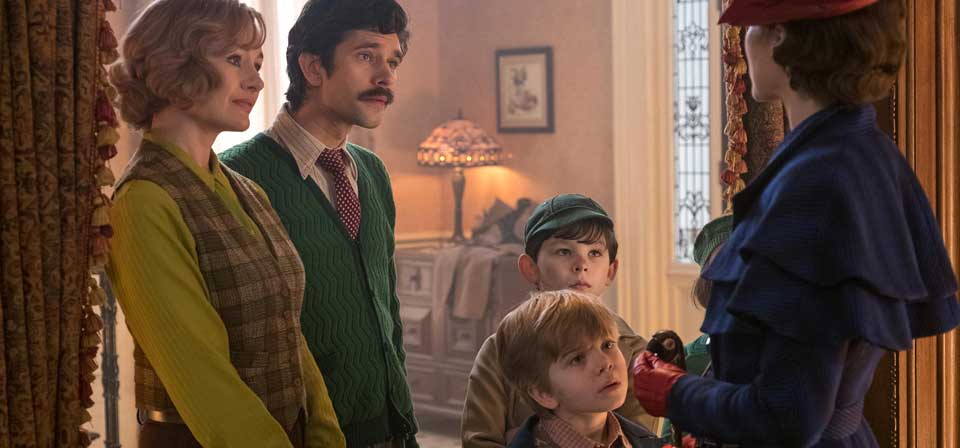
Mary Poppins Returns (2018)
Nostalgia for the original pervades virtually every aspect of the new film, from the production design of Cherry Tree Lane, where Emily Blunt’s Mary Poppins arrives to look after the next generation of Banks children, to the beat-for-beat exactness with which the sequel follows the original.
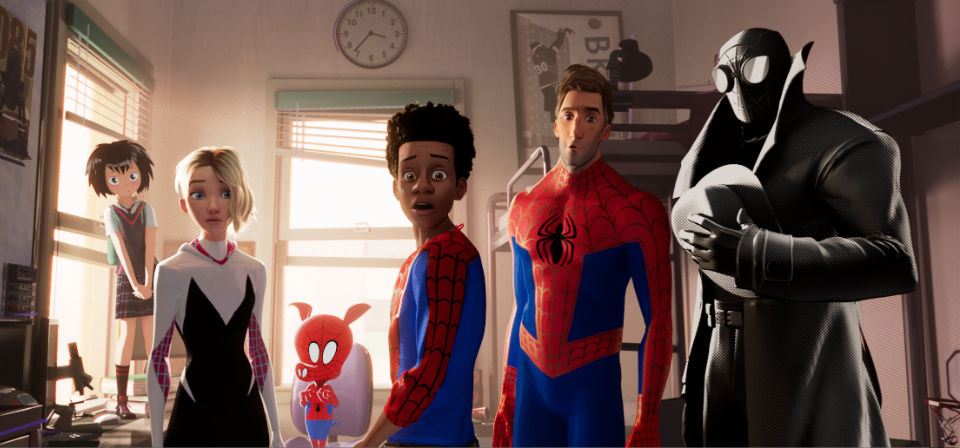
Spider-Man: Into the Spider-Verse (2018)
Here, at last, is the Spidey that family audiences need and the Spidey they deserve — and that’s just two of them!
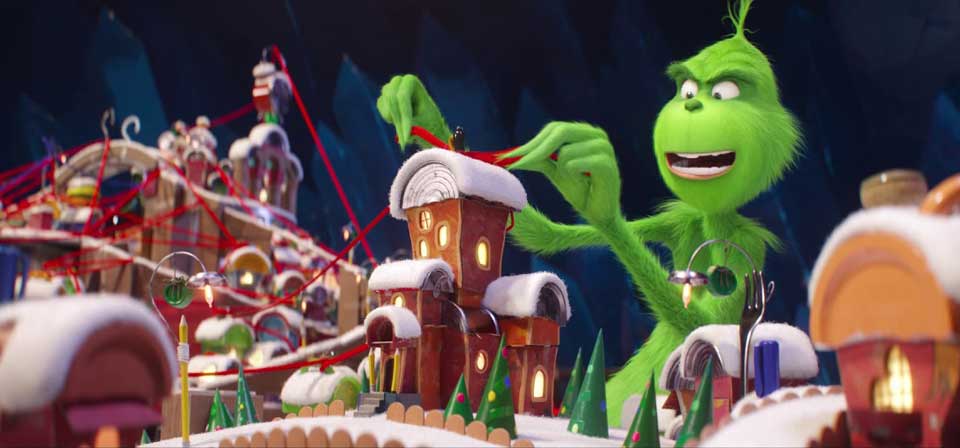
The Grinch (2018)
Replacing Karloff-ian malice and spite / Cumberbatch-ian grousing makes this one Grinch-lite. / It’s a kinder and gentler tale than we’ve seen / Of course he’s not nice, but this Grinch is less mean.
![Teen Titans Go! To the Movies [video]](/uploads/articles/teentitansgo.jpeg)
Teen Titans Go! To the Movies [video] (2018)
The superhero movie to end all superhero movies? Or every superhero movie at once?
![Hotel Transylvania 3: Summer Vacation [video]](/uploads/articles/hoteltransylvania3-vid.jpg)
Hotel Transylvania 3: Summer Vacation [video] (2018)
Clearly I am not a vampire. As you can see here, I’ve changed quite a bit in the last six years … not necessarily in my opinion of this franchise.
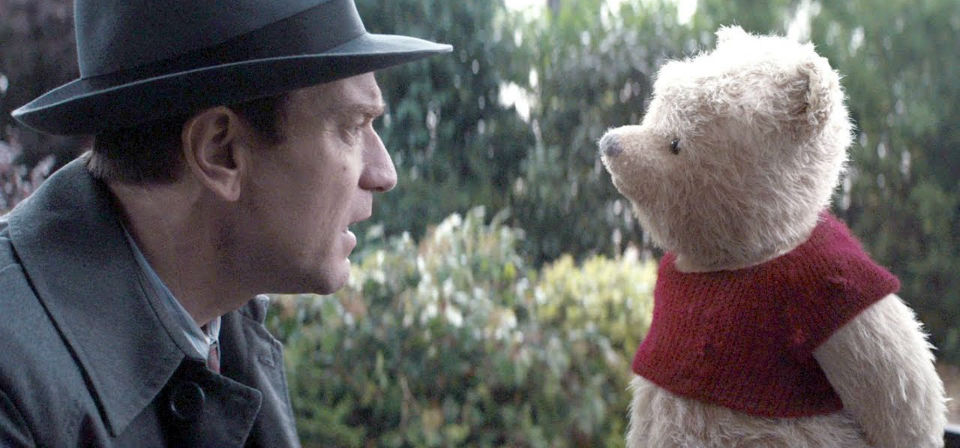
Christopher Robin (2018)
When such movies are done well, you get, say, The Incredibles or John Favreau’s Chef. When they aren’t, you get Jim Carrey in Mr. Popper’s Penguins or Steven Spielberg’s Hook — possibly the closest analogy for Christopher Robin, though Hook, for all its flaws, was clearly a personal film for Spielberg, whereas Christopher Robin feels cobbled together from bits and pieces of other movies without a cogent vision of its own.
![Incredibles 2 [video]](/uploads/articles/incredibles2-vid.jpg)
Incredibles 2 [video] (2018)
I dared to hope this one would be more than merely good. I was afraid it would be less than good.

Hotel Transylvania 3: Summer Vacation (2018)
I’m not thrilled about the lack of worthy romantic leading men in recent Hollywood animation, but I prefer the theme in Frozen, about needing to get to know someone before deciding to get married, to this series’ magical, inexorable “Zing” moment.
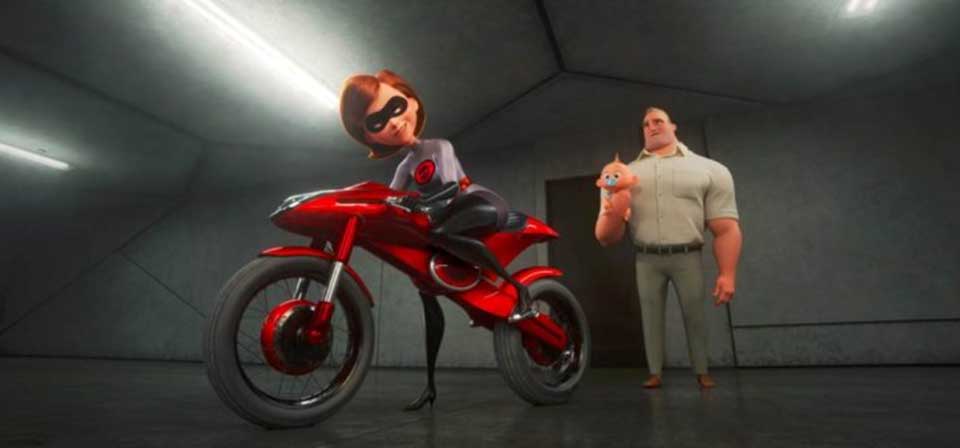
Incredibles 2 (2018)
As The Incredibles in its day towered over the Hollywood animation landscape of the last decade, so in some measure does Incredibles 2 in this decade — but what a different and diminished landscape it is today.

A Wrinkle in Time (2018)
“If it’s bad art,” Madeleine L’Engle once wrote, “it’s bad religion, no matter how pious the subject.”

Paddington 2 (2018)
I don’t want to review Paddington 2: I want to live in it, and invite you to live in it with me.
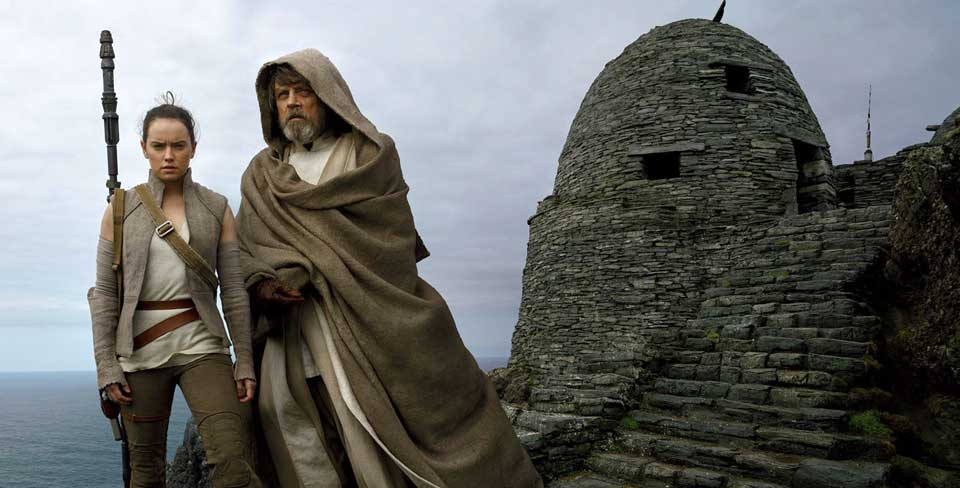
Star Wars: Episode VIII: The Last Jedi (2017)
Star Wars: Episode VIII — The Last Jedi is a strange beast: a swashbuckling action movie that is deeply skeptical of derring-do; a middle movie that works better as riff and commentary on the original source material than as a sequel to its immediate predecessor.
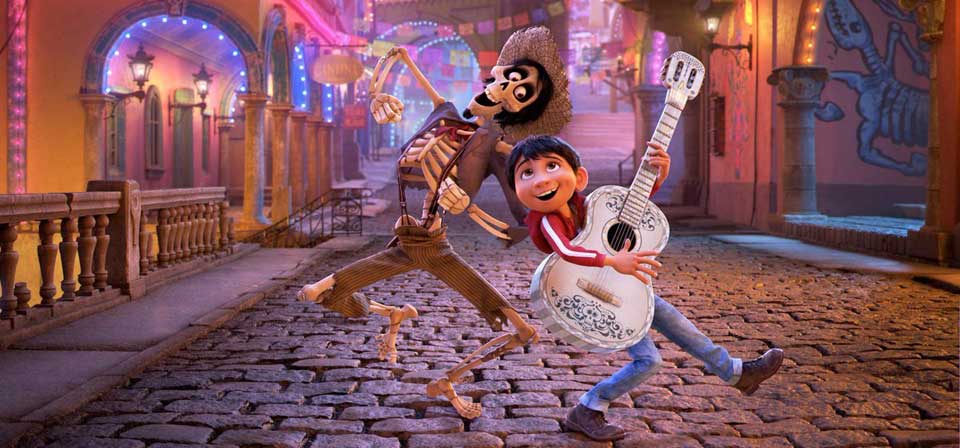
Coco (2017)
I’m tempted to say I’d like to see the version of Coco Pixar would have made 10 years ago. Not really, I guess, since then we wouldn’t have Ratatouille. Still, I can’t help wondering what the team that made Ratatouille might have done with Coco.
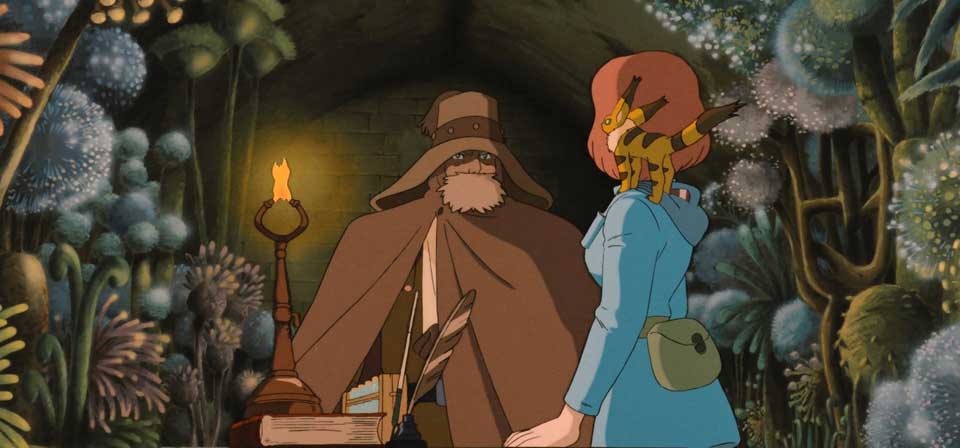
Nausicaä of the Valley of the Wind (1984)
(Reviewed by Sarah E. Greydanus) Nausicaä of the Valley of the Wind may be the quintessential Hayao Miyazaki film — not necessarily his best, but the most comprehensive assortment of his characteristic themes and motifs.

Despicable Me 3 (2017)
To call Despicable Me 3 desperate would be to ascribe too much effort and passion to the thing. Ice Age: Collision Course, now: There was a properly desperate sequel.
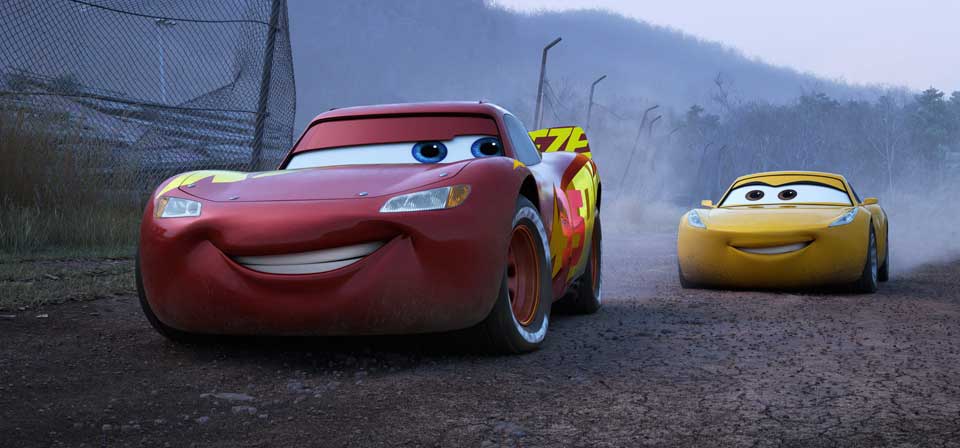
Cars 3 (2017)
At this point it seems like too much to hope for that any Pixar sequel, let alone a Cars sequel, should function smoothly from start to finish, but at least it ends well.
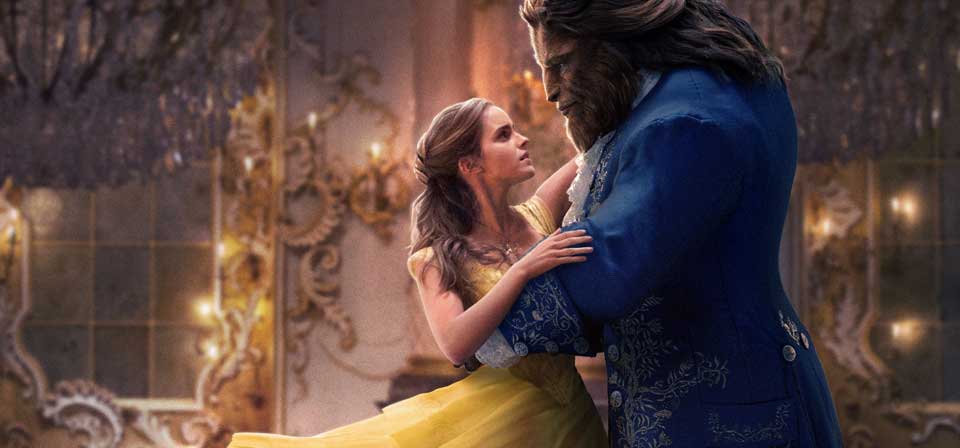
Beauty and the Beast (2017)
Can a realistically computer-rendered French gilt bronze candelabra be debonair? Jaunty? Rakish, even?
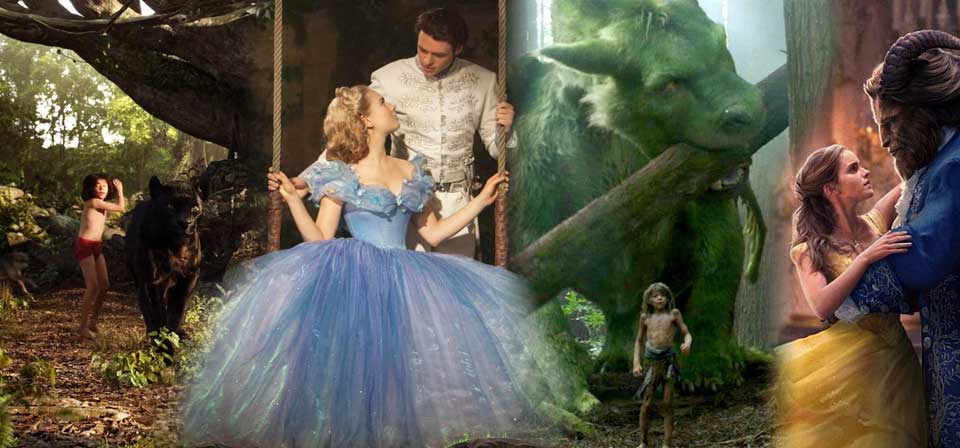
Reinventing the Vault: Disney’s classy new remakes
Linking these three terrific family films is a defiantly old-fashioned, almost countercultural lack of ironic revisionism and gritty edginess. Each of them feels in some way like a kind of movie they don’t make any more — if they ever did.
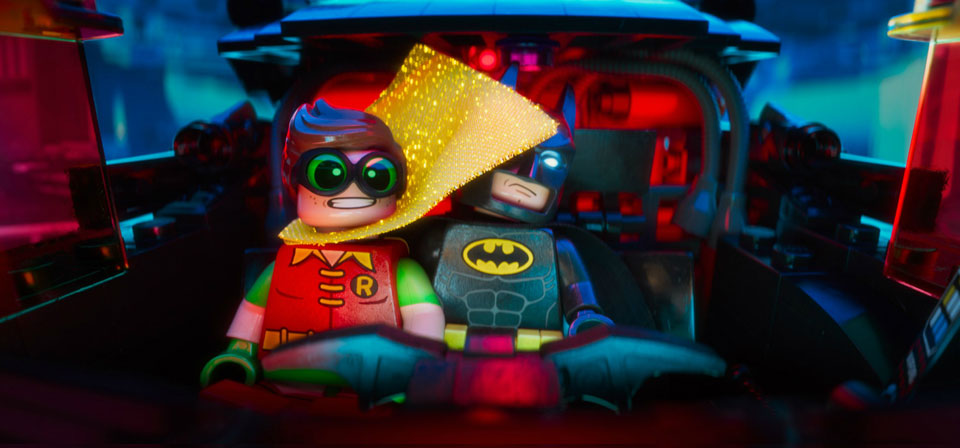
The Lego Batman Movie (2017)
Despite the villainous full-court press, Batman’s victory is so assured that no one is even worried about it. Clearly, something subversive has to happen to kick things out of superhero-movie business as usual and challenge Batman to his core. Would you believe … a giant swirling energy portal in the sky?

Spirited Away (2001)
No film in Miyazaki’s oeuvre haunts me like Spirited Away. One reason is the evocation of a seemingly impenetrable, incalculable world with rhythms and rituals that seem all the more opaque and unnerving because they are routine and transparent to those that are of that world.

Moana (2016)
It would be going too far to say that Moana combines everything I enjoy about contemporary Disney with everything I dislike, but it’s got quite a bit of both.
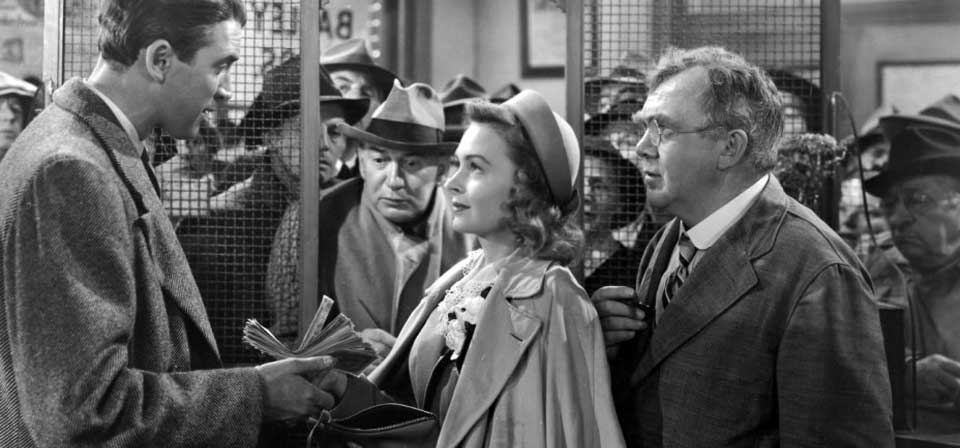
It’s a Wonderful Life (1946)
The truth is that It’s a Wonderful Life is both darker and more subversive than its popular reputation as cheery holiday “Capra-corn” would suggest, and more robustly hopeful than cynics and hipster deconstructionists would have it.

Miss Peregrine’s Home for Peculiar Children (2016)
1999 was a very good year for film, and how much more peculiar Tim Burton’s Miss Peregrine’s Home for Peculiar Children might have been had it come out that year, before the X-Men and Harry Potter franchises were launched in 2000 and 2001, respectively.

Queen of Katwe (2016)
There are so many reasons Queen of Katwe shouldn’t even exist, and just thinking about them all makes me even more vexed at Hollywood for its desperate obsession with exhausted franchise fare when there are winning and wonderful stories like this to be told.

The Iron Giant (1999)
There is a purity to Brad Bird’s directorial debut The Iron Giant, based on the British poet Ted Hughes’ children’s novel The Iron Man, that is inconceivable in the family film landscape of today.
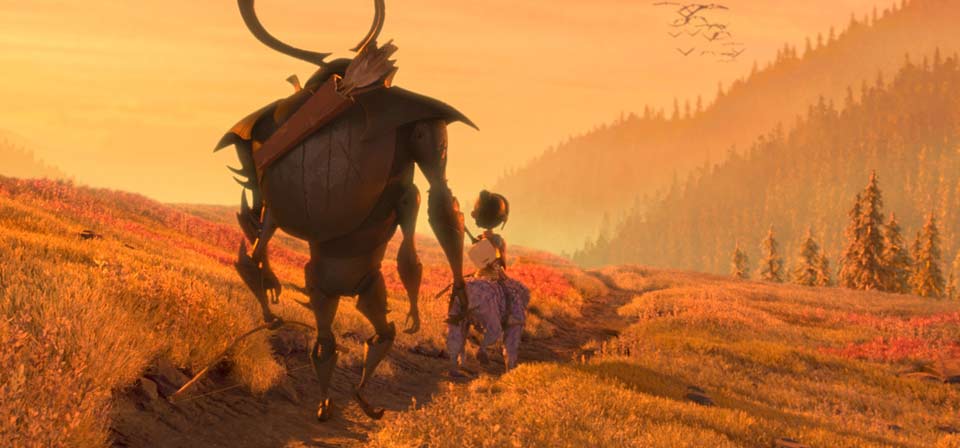
Kubo and the Two Strings (2016)
Kubo and the Two Strings comes close to being a masterpiece, and one of the two best American animated films in years, the other being Pixar’s Inside Out.

Pete’s Dragon (2016)
I’m almost afraid to say it out loud, or even in writing, but with Pete’s Dragon joining The Jungle Book and Cinderella, Disney may be giving the lie to the old cliché “They don’t make ’em like that any more.”
![Ice Age: Collision Course [video]](/uploads/articles/iceage5.jpg)
Ice Age: Collision Course [video]
The tipping point has been reached where I now wish that even the original Ice Age had never been made in the first place. Yes, even if it means no Scratt ever.
![Alice Through the Looking Glass [video]](/uploads/articles/alicethroughthelookingglass.jpg)
Alice Through the Looking Glass [video]
Lewis Carroll is now right side up in his grave, having turned over twice.

The Secret Life of Pets (2016)
The first act of The Secret Life of Pets leans on a style of humor that we might call “anthropomorphic observational comedy.”

Finding Dory (2016)
Hank the octopus is a particular standout. Hank’s squash-and-stretch movements push computer animation to yet another high-water mark, and his mad skills are highly entertaining — so entertaining, in fact, that I kind of wish the movie had been about him.

Three ages of Pixar
For 15 astonishing years, from 1995 to 2009, Pixar created a body of work — 10 films — so revolutionary and beyond mainstream Hollywood animation that it’s hard to quantify … In recent years, alas, Pixar has stumbled more often than not.
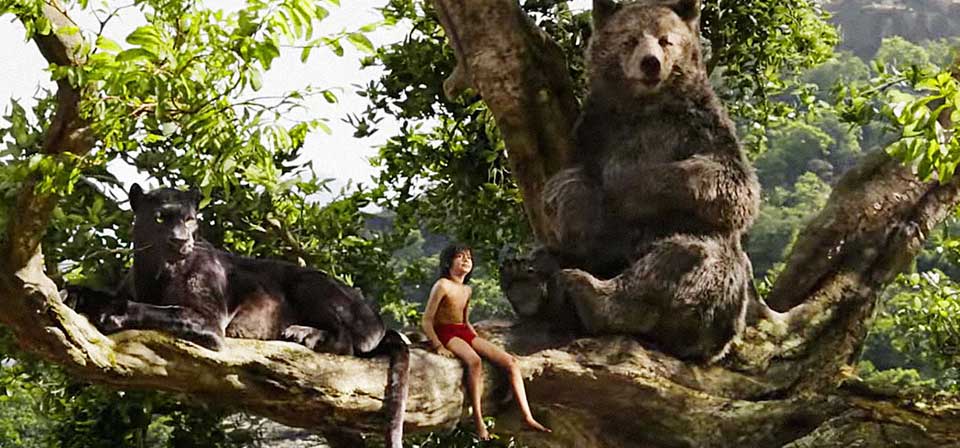
The Jungle Book (2016)
Like Kenneth Branagh’s Cinderella last year, The Jungle Book offers a lavish new reimagining of a beloved story, blending elements from the original literary source material with the classic animated Disney version.
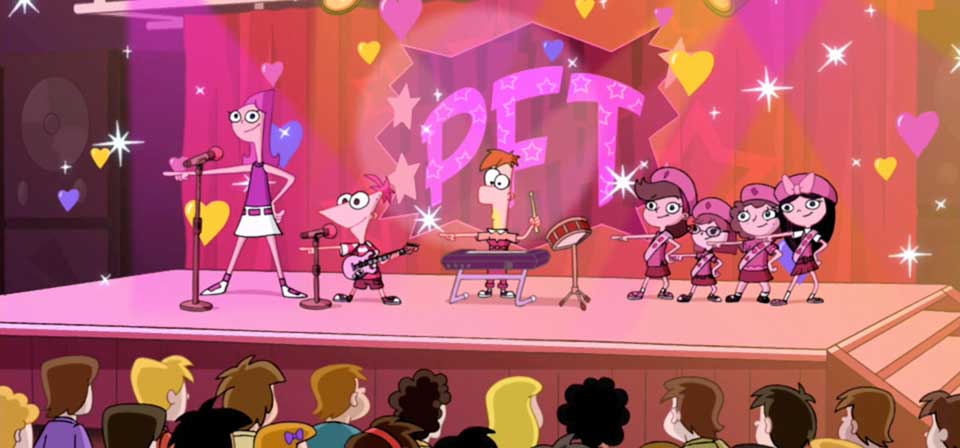
The subversive non-subversiveness of “Phineas and Ferb”
There are at least a half dozen reasons “Phineas and Ferb” never should have existed, and how fortunate for viewers of all ages that it does.

DreamWorks’ animated Torah
During the second week of Advent, as we’re wrapping up Genesis and turning to Exodus, our family viewing often includes DreamWorks’ two animated Pentateuch movies: the Exodus movie The Prince of Egypt and its made-for-TV prequel, Joseph: King of Dreams.
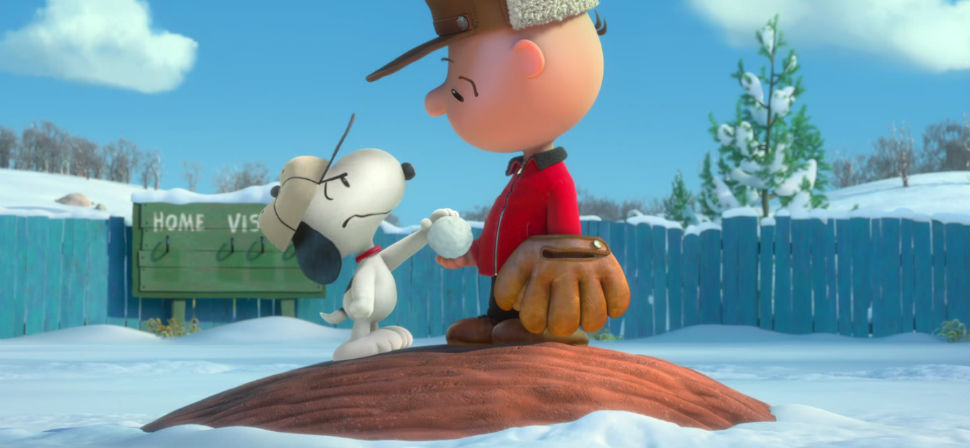
The Peanuts Movie (2015)
The Peanuts Movie comes billed as being “From the imagination of Charles Schulz,” and, almost astonishingly, it pretty much is.

You’re an institution, Charlie Brown
“Peanuts”’ appeal was universal: It was beloved by young and old, by the intelligentsia as well as the masses; it was the definition of mainstream, yet it was also embraced by the counterculture. It was bitterly pessimistic, yet never succumbed to the despair and nihilism of, say, “Dilbert” or “Pearls Before Swine.”
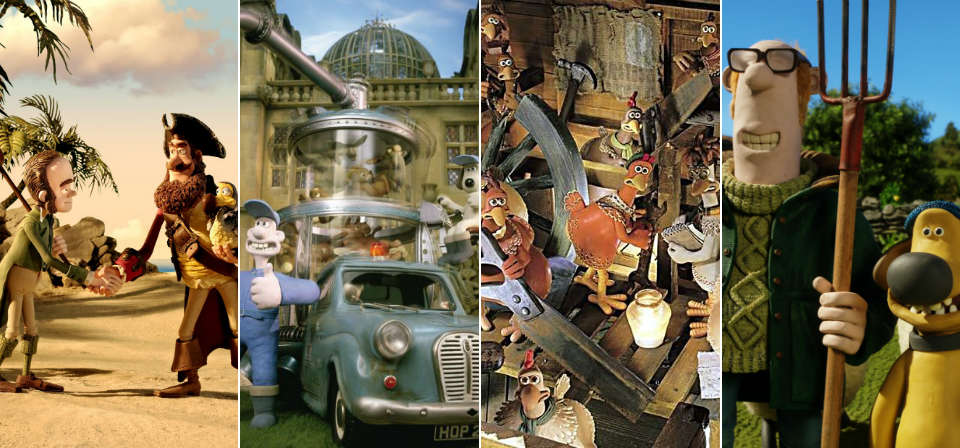
Shaun the Sheep and beyond: The magic of Aardman
For the Aardman filmmakers, it seems that inspiration and the tactile work of stop-motion go hand in hand.

Shaun the Sheep Movie (2015)
The world of Shaun the Sheep puts a smile on my face before anything even happens.

Minions (2015)
Like the Penguins of Madagascar and Mater the tow truck, the Tic-Tac-shaped, banana-colored Minions join the ranks of popular comic sidekicks who have taken over their animated franchises. This is usually a sign of the end, although Cars 3 is on the way, and nobody has said Madagascar 4 isn’t happening.

Batkid Begins (2015)
Above all, it’s the story of the incredible lengths to which the Make-a-Wish staff and volunteers go in order to create special experiences for long-suffering children to make up in some way for their lost childhood.

Inside Out (2015)
Inside Out is a rare family film for so many reasons: a story with no villain, for one thing, centering on an imperfect but basically happy intact family going through a tough time. It is a wise and wounding depiction of growing up, a story of growth and loss, with real stakes and real consequences.
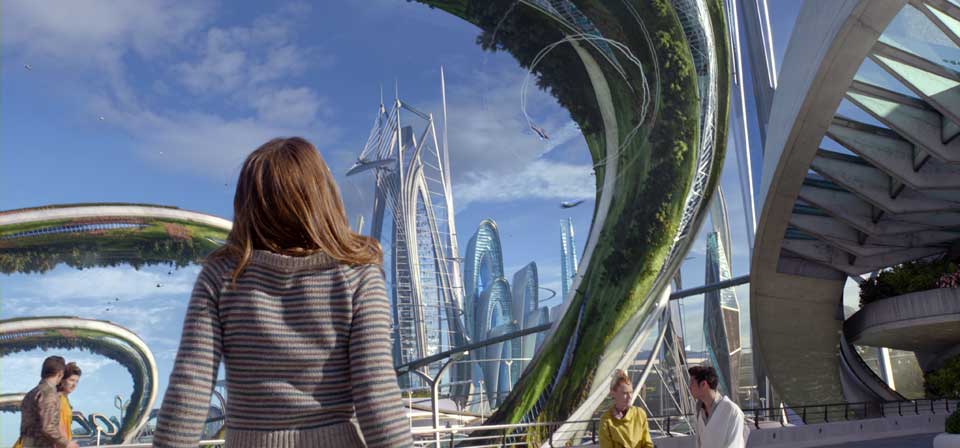
Tomorrowland (2015)
Tomorrowland argues that the future is as dark or as bright as we choose to make it; that artists, scientists and dreamers can save the world; that the dystopian post-apocalyptic nightmares dominating popular culture are killing us, and are no more inevitable or realistic than the Space-Age techno-optimism of Disney’s Tomorrowland and EPCOT, Roddenberry-era Star Trek and even The Jetsons.
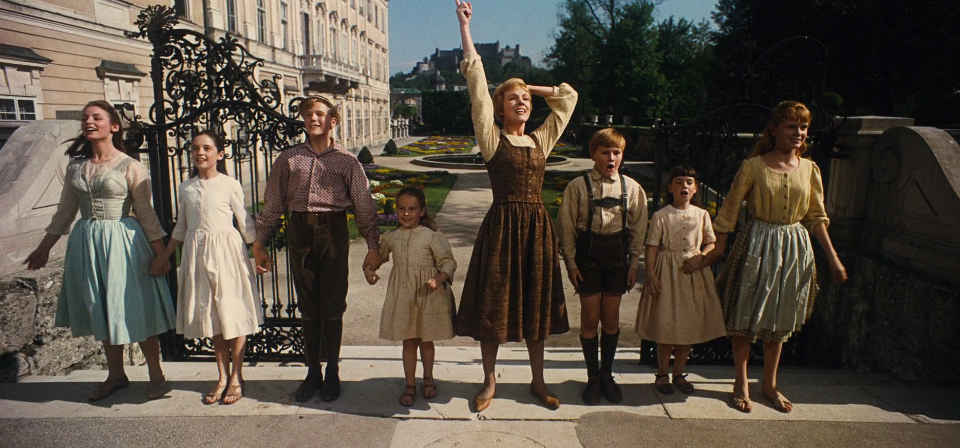
The Sound of Music (1965)
Half a century later, The Sound of Music is probably still the world’s favorite big-screen stage musical adaptation. Joyous, gorgeous, comforting, full of (almost) uniformly spectacular songs, the film’s emotional power is irresistible, even for the many critics, such as Pauline Kael, who hated its shallowness and emotional manipulation.
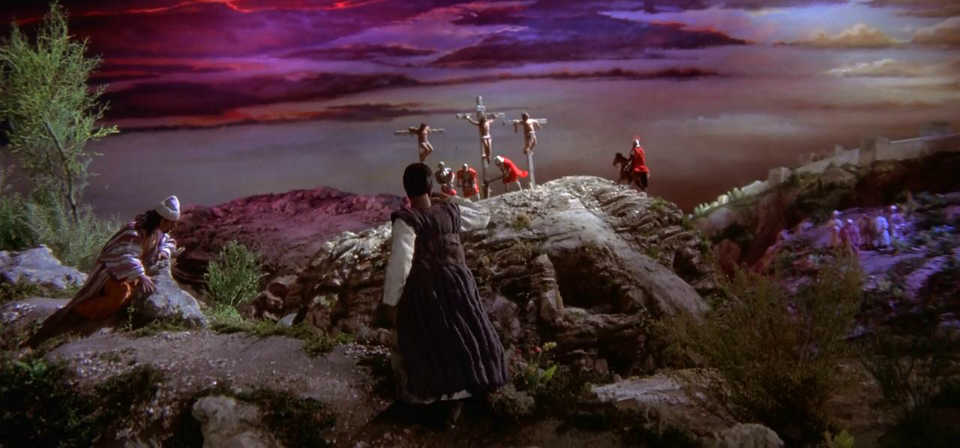
Must-see Easter season viewing: The Jesus movie for absolutely everyone
The Miracle Maker is a singular achievement: a Jesus movie that is simple enough for children, sophisticated enough for scripture scholars and theologians, and artful enough for discerning cinephiles.

Disney’s new Cinderella and the problem of parents in Hollywood fairy tales and family films
There are good reasons for introducing parent-child conflict into family films, depriving child protagonists of a parental safety net, depicting single-parent households, etc. There’s no good reason positive depictions of healthy, intact families in family films should be an endangered species.
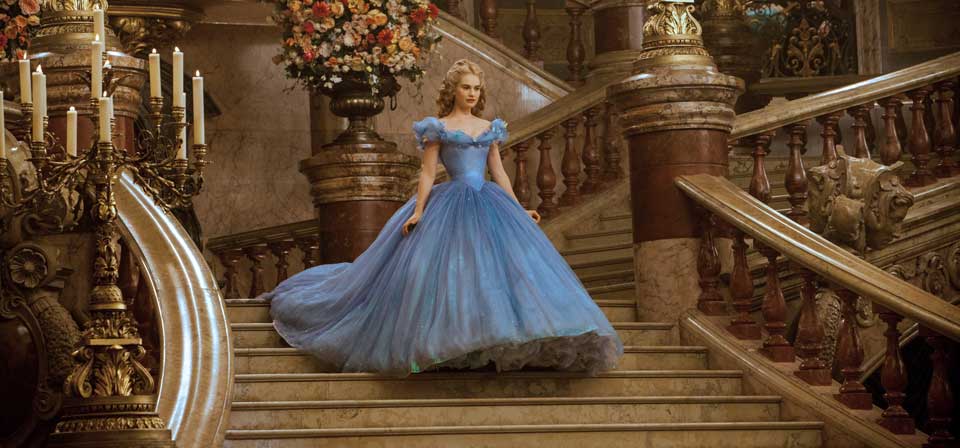
Cinderella (2015)
Kenneth Branagh’s Cinderella is such a gallant anachronism, such a grandly unreconstructed throwback, that it offers, without ever raising its voice, a ringing cross-examination of our whole era of dark, gritty fairy-tale revisionism.
![Annie [video]](/uploads/articles/annie-2014.jpg)
Annie [video] (2014)
I want to say I love the idea for Little Orphan Hushpuppy … but I’m not convinced there’s actually an idea here.
![Penguins of Madagascar [video]](/uploads/articles/penguins-of-madagascar.jpg)
Penguins of Madagascar [video] (2014)
Stick a fork in them, they’re done. Or maybe that’s just me.
![Big Hero 6 [video]](/uploads/articles/big-hero-6_khVAOrT.jpg)
Big Hero 6 [video] (2014)
It’s a Marvel movie! It’s a Disney cartoon! It’s … a Marney movie! It’s set in San Fransokyo! Wait, what?
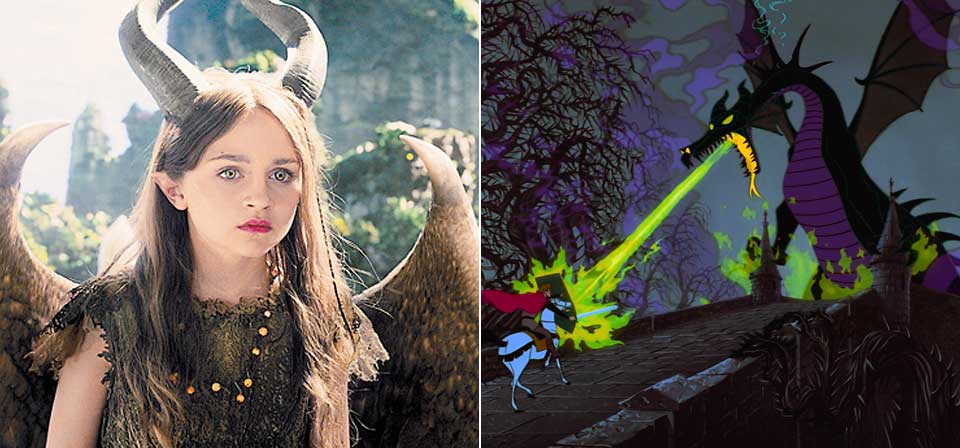
How Disney’s Maleficent subverts the Christian symbolism of Sleeping Beauty
Give me princesses like Leia from Star Wars, Merida from Brave or Tiana from The Princess and the Frog any day. But there’s a difference between creative revisionism and simple inversion.
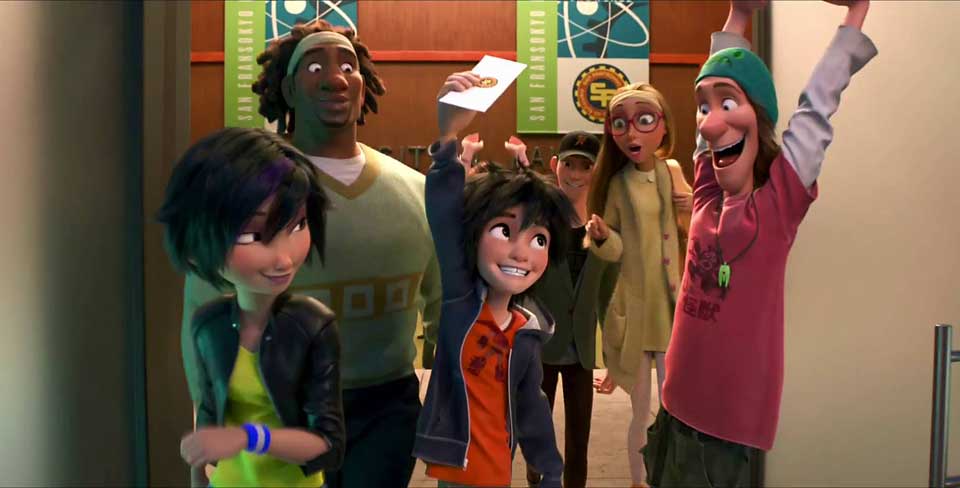
Big Hero 6 (2014)
At the intersection of Disney and Marvel, in a pan-Pacific megalopolis spanning San Francisco and Tokyo, in a world with one foot in science fiction and one in superhero adventure, is Big Hero 6. By my lights, this is a very good place to be.
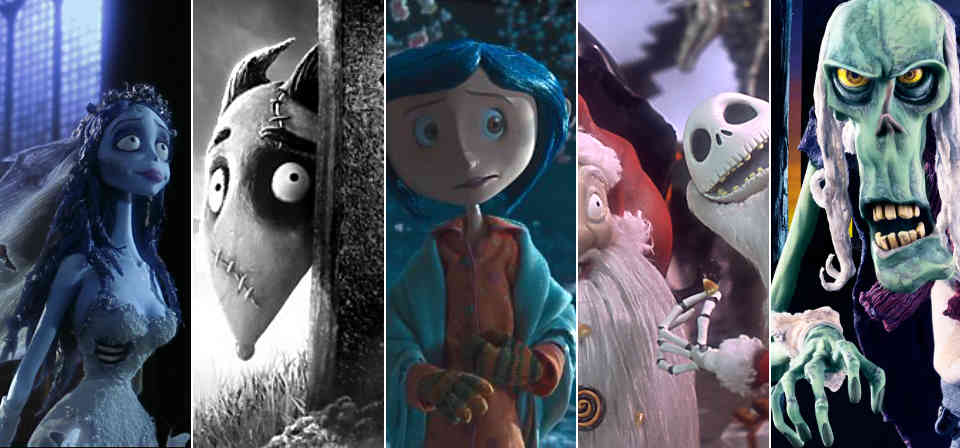
Stop-Motion Macabre
Stop-motion animation — which, unlike computer animation and traditional hand-drawn cel animation, utilizes real objects shot frame by frame, with tiny adjustments made between shots — is a defiantly old-fashioned, niche medium, often used to creepy effect: Henry Selick’s The Nightmare Before Christmas and Coraline; Tim Burton’s Corpse Bride and Frankenweenie; Aardman’s Wallace and Gromit: Curse of the Were-Rabbit.
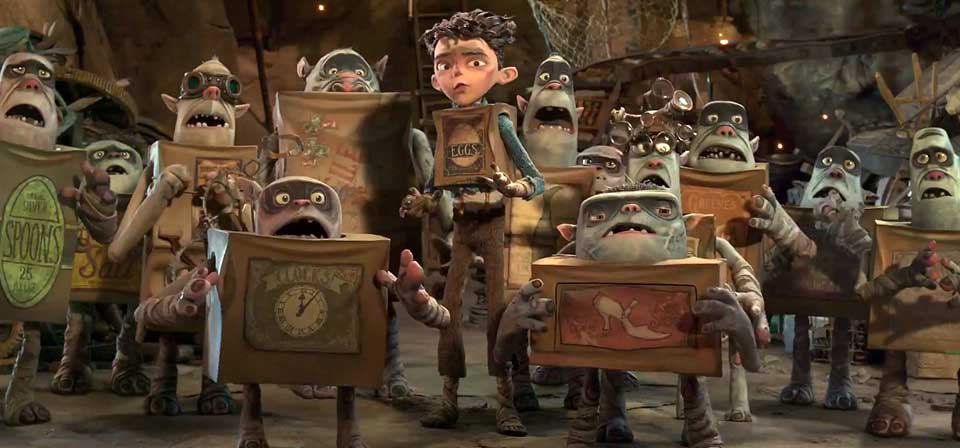
The Boxtrolls (2014)
The Boxtrolls is so defiantly weird and bleak, so committed to the bitter end to its grotesque aesthetic and chilly story, that even as the film crashes and burns you can’t help being moved by the hardworking stop-motion animators’ devotion to their craft.
Teenage Mutant Ninja Turtles [video] (2014)
Thanks to this film, I’ll be adding “Shrinking World Syndrome” to SDG’s Very, Very Little Movie Glossary.
Planes: Fire & Rescue [video] (2014)
Looking at those Cars eyes is worse than having no remnant of Pixar at all this year.
Planes: Fire & Rescue (2014)
With this sequel to last summer’s spin-off from the franchise that descended from Pixar’s Cars, the World of Cars has left behind not only stock cars, the open road, specific real-world settings and Larry the Cable Guy, but racing itself. Practically nothing is left of John Lasseter’s original vision, except those blasted windshield eyeballs. In this melancholy year without Pixar, it’s worse than no reminder at all.
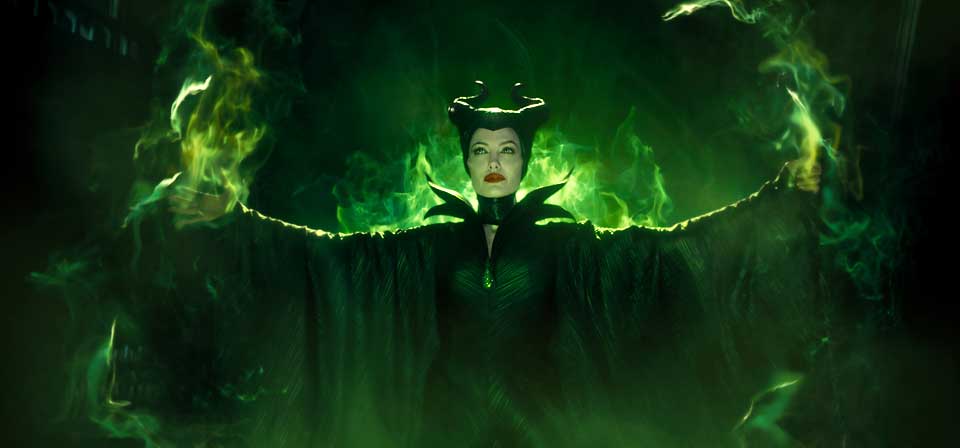
Maleficent, Rape and Sympathy for the Devil
A story like this demands to be seen through the lens of what biblical scholars call “redaction criticism,” which basically means “What was changed, added or deleted in this retelling of the story, and what do those changes tell us about the storyteller’s intentions and outlook?”

How to Train Your Dragon 2 (2014)
The first film related how Hiccup changed his village’s way of life forever, winning the love of the girl of his dreams, the approval of his authoritarian father and the respect of everyone in town — not to mention the loyalty of his magnificent new draconian friend, Toothless. Where do you go from there?
![Maleficent [video]](/uploads/articles/maleficent.jpg)
Maleficent [video] (2014)
Angelina Jolie is perfect for the part of Disney’s most iconically evil villainess. If only they’d let her play it for more than one scene.
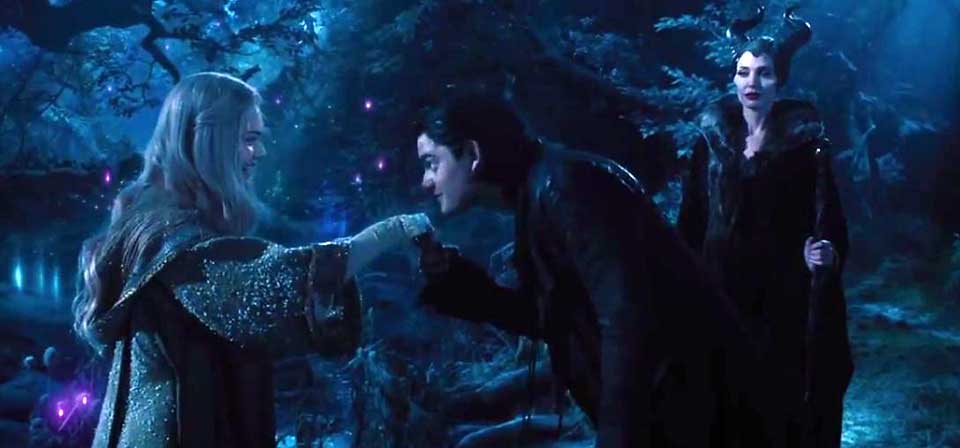
Maleficent (2014)
It’s fair to say that Disney’s Maleficent plays to an extent as warmed-over Frozen. This is not a good thing, even, I think, if you are a fan of Frozen.
Ernest & Celestine [video] (2014)
I can’t imagine the soul who could watch this movie without smiling.
Muppets Most Wanted [video] (2014)
Jason Siegel and Amy Adams are out. Can Ricky Gervais, Ty Burrell and Tiny Fey pick up the slack?
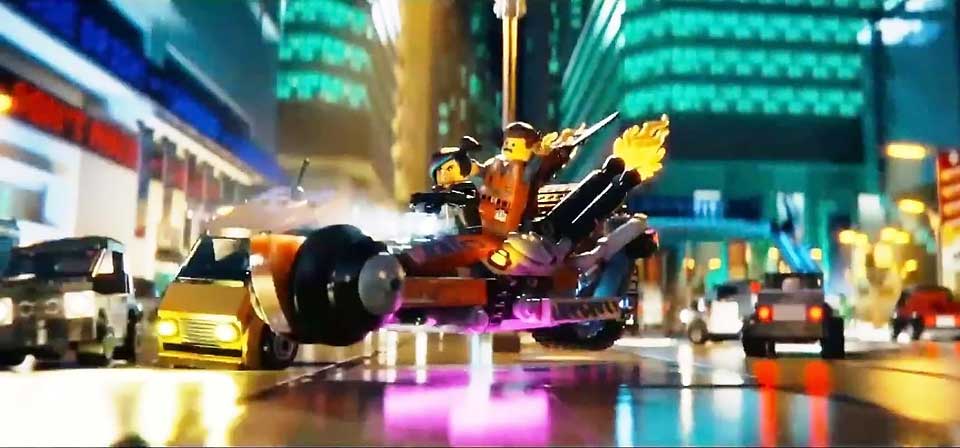
The Lego Movie (2014)
Here is something I didn’t see coming: The freshest, most unique animated family film from any Hollywood studio in well over a year is … based on a line of brightly colored plastic construction blocks and assorted accessories. I’m not kidding!

Frozen (2013)
Frozen may be the most tragic fairy tale in the Disney canon, which is saying something.
Frozen [video]
Compared to Disney’s last (and only other) computer-animated fairy tale, Tangled, Frozen has twice the princesses, twice the hunky love interests, twice the domesticated anthropomorphic ungulates … but not a fraction of the humanity.
Cloudy with a Chance of Meatballs 2 [video]
Part of me kind of wishes they had kept the original title Cloudy 2: Revenge of the Leftovers. Cloudy With a Chance of Meatballs 2: my 60-second “Reel Faith” review.
The Wizard of Oz [video]
Digitally remastered from the original negatives, painstakingly restored, The Wizard of Oz celebrates its 75th anniversary in style. Here’s my “Reel Faith” 60-second tribute to this beloved classic.
Over the Rainbow: The Wizard of Oz Turns 75
So many songs about rainbows and what’s on the other side? What was Kermit talking about? There’s only one song like that … and one movie that embodies the childhood magic Jim Henson wanted to evoke.
The Summer’s Best-Kept Secret: From Up on Poppy Hill
Co-written by Ghibli co-founder Hayao Miyzaki and directed by his son Goro Miyazaki (Tales From Earthsea), From Up on Poppy Hill is a gently naturalistic departure from the high-flying fantasy for which the studio is best known.
Planes [video]
It may be Pixar Ultra-Lite, but Disney’s Planes is a pleasant change of pace from the likes of The Croods and Turbo.
Planes (2013)
Both the big race and international flavor recall Cars 2 as well as DreamWorks’ Turbo, the protagonist of which had the same personal crisis as Dusty, a longing for speed he wasn’t built for. Yet Planes, in its modest way, cannily avoids the pitfalls that made those films unsatisfying.

Turbo (2013)
At some point, alas, it becomes apparent that Turbo’s more daring elements are all surface, and the story is locked into a well-worn path to an all-too-obvious destination. Writing about Monsters University, I noted that, like many other Pixar films, it pours cold water on the familiar family-film platitude that you can achieve anything you put your mind to if you just want it enough. Turbo embraces the platitude.
Despicable Me 2 [video]
He was bad to the bone. Now he’s Dad to the bone. Does his mojo survive the transition? Despicable Me 2: my “Reel Faith” 60-second review.
Despicable Me 2 (2013)
“Dr. Evil without Austin Powers,” I called Gru in my review of Despicable Me. Turning Dr. Evil into Austin Powers (mutatis mutandis, for a family film) is the best possible way to keep the reformed character from losing his mojo. (Oh, how Mike Myers has influenced this discussion!)
From Up on Poppy Hill [video]
Studio Ghibli takes a break from high-flying fantasy in this naturalistic, nostalgic coming-of-age story.
Oz the Great and Powerful (2013)
Oz the Great and Powerful is brightly colorful, sincere and meant for children. That doesn’t make it good, exactly, but at least it’s basically the right kind of movie, which is saying something these days, alas.
Overlooked Family Fare
It’s spring break, or summer vacation, and the grandkids are visiting. Or you’re looking for a DVD for a birthday present. You want three things: a) something worthwhile (not junk); b) something they’ll enjoy (not just high-minded or educational fare); and, crucially, c) something they haven’t already seen to death.
![Hotel Transylvania [video]](/uploads/articles/hoteltransylvania.jpeg)
Hotel Transylvania [video]
Even monsters need a vacation. I would like to think they’re more discerning than this.
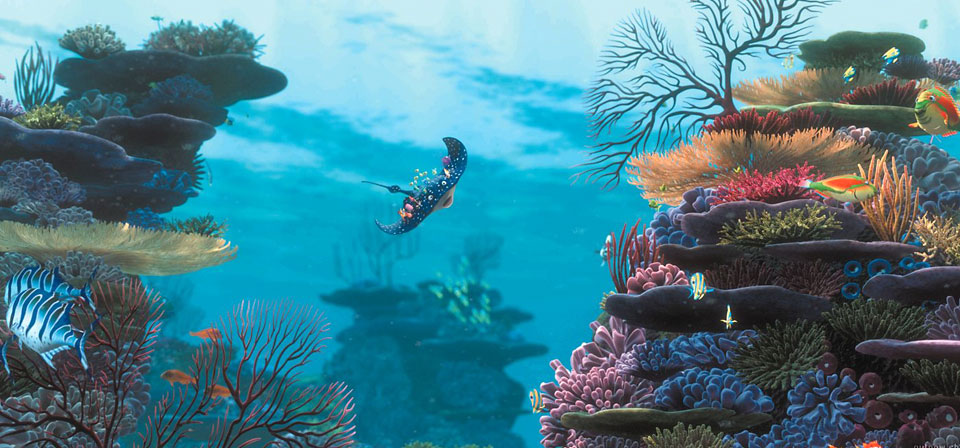
Finding Nemo (2003)
(New review for 3-D rerelease) Andrew Stanton’s Finding Nemo is the best father-son story in all of Hollywood animation, and maybe animation generally. It’s also a stunningly gorgeous film that exploits the potential of computer animation like no film before it and few films after it.

ParaNorman (2012)
Why does stop-motion animation work so well as a medium for the macabre, from The Nightmare Before Christmas to Tim Burton’s Corpse Bride to Coraline?
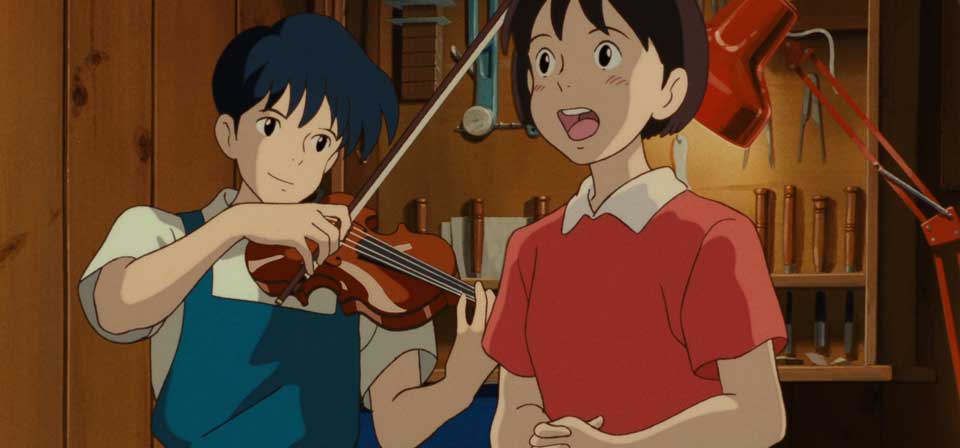
Whisper of the Heart (1995)
(Reviewed by Sarah E. Greydanus) Even at their most stunningly far-fetched, Ghibli films also have a history of celebrating the details of everyday life: cooking, cleaning, planting, studying, mending, become important and precious functions, worthy of devoted attention … Whisper of the Heart may represent the studio’s simplest gesture of this honoring of everyday life.
Ice Age: Continental Drift (2012)
Ice Age: Continental Drift is more like a Happy Meal than a movie. It’s another serving of exactly the same product that millions of families have been served before and will come back to again and again. Its brand-name familiarity and reassuring sameness are its stock in trade. Nothing is different except for the toys; last time it was dinosaurs, this time it’s pirates. It’s more resolutely like the three previous Ice Age movies than they are like themselves.
Brave (2012)
Among Hollywood animated films, it may be the most positive affirmation of family since The Incredibles and the best fairy tale since Beauty and the Beast.
Madagascar 3: Europe’s Most Wanted (2012)
I blame the penguins for Madagascar 3: Europe’s Most Wanted.
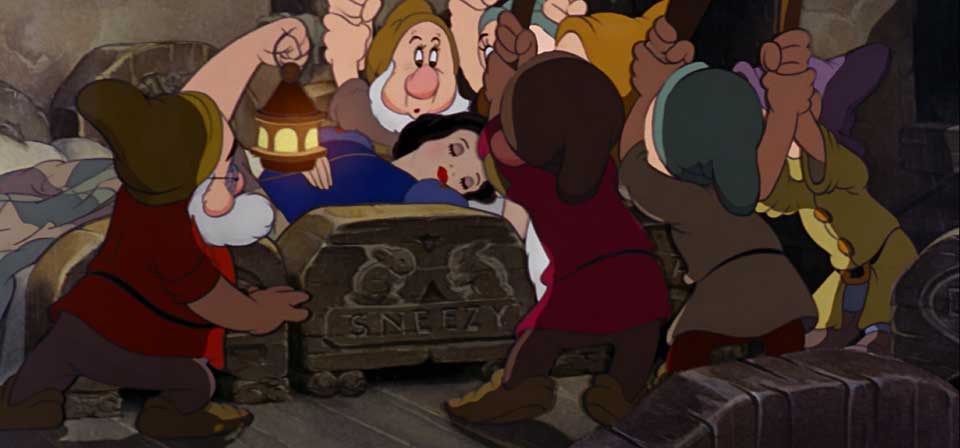
Snow White and the Seven Dwarfs (1937)
Walt Disney’s Snow White and the Seven Dwarfs is widely celebrated as a beginning, the first feature-length animated film in Hollywood history. It’s just as correct, though, and perhaps more illuminating, to hail it as a culimination — as the crowning achievement of years of experimentation, discovery, growth and achievement by Disney’s animation team.
The Pirates! Band of Misfits / In an Adventure with Scientists! (2012)
An Aardman film is always an exercise in absurdity, but The Pirates, directed by Peter Lord (Chicken Run) and Jeff Newitt, is possibly their silliest ever. This is the kind of film in which people say things like “Blood Island! So called because …it is the exact shape of some blood!” And: “You can’t always say Arrrrr! at the end of a sentence and think that makes everything all right.” And: “London town: the most romantic city in the world.” (Followed by: “London smells like Grandma!”) Those crazy Brits!
Chimpanzee (2012)
Disneynature’s Chimpanzee has the makings of a great nature documentary. It takes us places other films haven’t and shows us sights we haven’t seen on any screen. Visually, it’s a triumph of intripid nature documentary filmmaking, with an extraordinary and heartwarming twist in the lives of a chimpanzee community. Yet like other recent nature flicks, including Arctic Tale and African Cats, it’s wrapped in increasingly tiresome, condescending kiddie-movie packaging. It’s like discovering a rare dish prepared by eminent chefs, drizzled with waxy treacle and stuffed in a Happy Meal box.
Mirror Mirror (2012)
What’s the last movie you saw that created an imaginary world that was actually beautiful, bursting with color and beauty and inspiration? A world that reminded you of the feeling you had as a child the first time you saw Dorothy open that door on the Technicolor world of Oz? A world you would actually like to enter and walk around in?

The Lorax (2012)
Well … its heart’s in the right place. Give the filmmakers that. / This isn’t The Grinch or The Cat in the Hat. / It’s not outright ugly, though it slips off the rails. / It wants to be decent. It tries. But it fails.

The Secret World of Arrietty (2012)
The Secret World of Arrietty just might change the way you look at the world around you — right around you. A wide-eyed sense of discovery and revelation permeates the film, and what it reveals is … the mystery and wonder of an ordinary home.
War Horse (2011)
In War Horse Spielberg harkens back to an earlier cinematic age, creating something more like a Golden Age Hollywood epic than any film I’ve seen in years, the one other notable example being Baz Luhrmann’s Australia.
The Adventures of Tintin: The Secret of the Unicorn (2011)
Tintin in the comics was the perpetual small-town boy next door. Tintin in the movie is like the boy next door who’s been watching “Mantracker,” “Man vs. Wild” and “Mythbusters” for so long that he’s completely jaded to reality.
Hugo [video]
Here’s my 30-second take on Martin Scorsese’s Hugo.
Arthur Christmas [video]
Here’s my 30-second take on Aardman Animation’s Arthur Christmas.
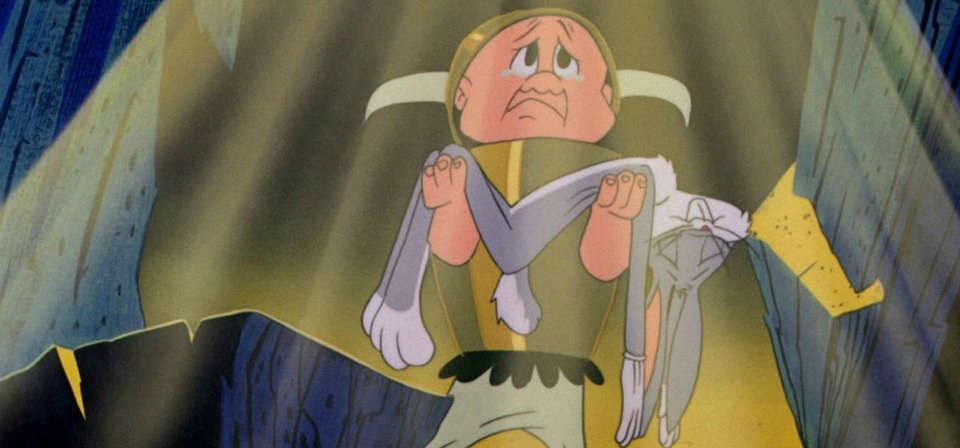
Looney Tunes: An Appreciation
I don’t remember the first time I encountered Charlie Chaplin or the Marx Brothers, or the first time I saw Casablanca, but whenever it was, I came to them with some inkling of what lay in store thanks to Looney Tunes.
The Muppets (2011)
This is quite deliberately not a reboot or reimagining or any such thing. Perhaps we can call it a revisiting. Like this summer’s charming Winnie the Pooh (also from Disney), The Muppets is a happy throwback, very much of a piece with material that my generation grew up with, eclipsing the lameness of recent direct-to-video efforts. Who would have thought two classic family franchises that have lain fallow for so long would be reborn in the same year?
Happy Feet Two (2011)
Little ones are “tougher than we think,” a penguin remarks in Happy Feet Two, and you can tell director George Miller believes it. The animated sequel pulls few punches: It’s overshadowed by more darkness, menace, heartache and anxiety than any talking-animal picture I can think of since, well, Miller’s last family-film sequel, the execrable Babe: Pig in the City. Neither the classic Babe nor the original Happy Feet contained any hint of the darkness of the sequels. Apparently Miller’s strategy is to soften kids up first, then drop the bomb.
Puss in Boots (2011)
Banderas’s swashbuckling Puss in Boots first appeared in Shrek 2, quickly establishing himself as one of the most popular supporting characters in the franchise. Now in a starring role in this spinoff, Puss spins the story in a direction strikingly different from the Shrek films.
The Mighty Macs (2011)
The movie is full of Catholic iconography that Catholic viewers and fans of Golden Age Hollywood Catholicism will appreciate. Statues of Jesus, Mary and the saints are everywhere. I compared the movie’s Catholic milieu to a Bing Crosby film, but a Crosby film would actually have edgier personalities and more conflict.
Real Steel (2011)
Real Steel is just plain unpleasant to sit through. So much of the movie is spent amid screaming crowds and abrasive music, often in dark, trashy dives, watching giant robots pound each other into scrap metal. The robot boxing is surprisingly good (Sugar Ray Leonard was a consultant). It’s the humans that are unpleasant.
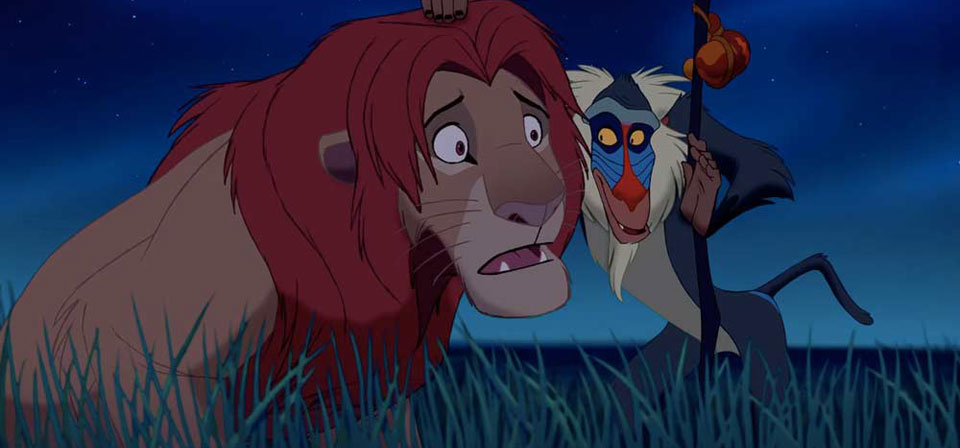
The Lion King (1994)
Chronologically, The Lion King stands between the striking triumphs of the early Disney renaissance (The Little Mermaid, Beauty and the Beast and Aladdin) and the bumpy deterioration of the latter 1990s (Pocahontas, The Hunchback of Notre Dame, Hercules, etc.). One way or another, it’s at the turning point between Disney’s creative renewal and its eventual decline. Fans might locate it near the pinnacle, along with Beauty and the Beast, but I don’t feel the love.
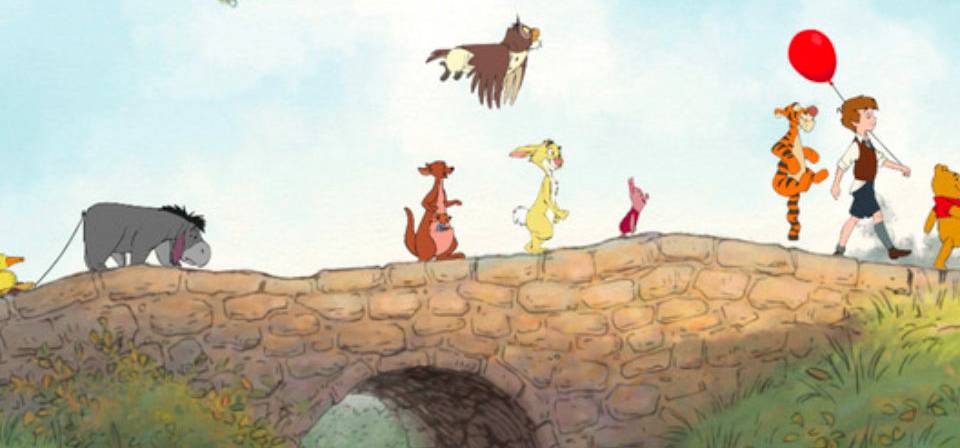
Winnie the Pooh (2011)
Disney’s new Winnie the Pooh is an unexpected gift, an unlikely return to a magical and gentle world that belongs so firmly to the past that I would have thought the journey all but impossible.

Zookeeper (2011)
Zookeeper is offensive to women, men, children, parents, WASPs, Asians, African-Americans, animals and zookeepers. Also Nick Nolte fans may not be too happy. Have I overstated things? Possibly, but how will we ever know? It is a movie with no conceivable audience. Somewhere in Hollywood are producers who entrusted money and equipment to people who put talking zoo animals in the same movie as Kevin James inadvertently flashing Rosario Dawson and Leslie Bibb with his off-camera member. “Oh! That’s going to be hard to unsee,” Dawson exclaims in dismay. Parents: Think long and hard about those words.
Cars 2 (2011)
Visuals aside, Cars 2 is the first Pixar film ever (or at least since A Bug’s Life) that could one could easily imagine as a DreamWorks film—circa Shark Tale perhaps, with its punningly fishified analog of the human world. Or, with its frenetic action and gimmickry, Cars 2 bears some resemblance to a Blue Sky Studios cartoon (circa Robots, say, or Rio, with its world culture flavor). In a word, not only is Cars 2 mediocre, it doesn’t even feel like mediocre Pixar.
Mr. Popper’s Penguins (2011)
While the Atwaters’ book is not exactly a classic, it’s beloved by generations of readers — but not by the people who have brought you this big-screen adaptation starring Jim Carrey. The makers of this film do not love Mr. Popper’s Penguins. At all. It’s hard to believe that this junk was directed by Mark Waters, who presided over the big-screen adaptation of The Spiderwick Chronicles, a smart, scary adaptation of a children’s book series that honors its source material almost as much as Mr. Popper’s Penguins doesn’t.
Kung Fu Panda 2 (2011)
Returning screenwriters Jonathan Abel and Glenn Berger recognize that what’s needed is deeper emotions and darker themes as well as more action and higher stakes … At the same time, the movie makes three key mistakes.
Rio (2011)
From the arches of the Carioca Aqueduct to Sugarloaf Mountain, from the flamboyant costumes of the samba schools to the sundrenched beaches of Guanabara Bay, Rio is as colorful a look at a faraway world as kids are likely to get without reading subtitles.
Hop (2011)
Hop is the kind of movie that makes helpless critics wish we could stage an intervention. Parents! It doesn’t have to come to this!
Born to Be Wild (2011)
Really, Born to Be Wild is as much a celebration of the better side of human nature as of the natural world. In their own way, these ladies are carrying out the Edenic mandate given to Adam to take responsibility for creation, to tend the garden and share in God’s providential oversight of the animal world (cf. CCC #373).
Soul Surfer (2011)
Soul Surfer does nearly everything you expect it to, but it does it more likably and satisfyingly than you might think it would. Based on 21-year-old pro surfer Bethany Hamilton’s memoir Soul Surfer: A True Story of Faith, Family and Fighting to Get Back on the Board, it’s an inspirational sports biopic about a Hawaiian surfer whose devout faith helps her bounce back after losing an arm in a shark attack (at 13 in real life).
The Chronicles of Narnia: The Voyage of the Dawn Treader (2010)
Is it possible that the makers of The Voyage of the Dawn Treader have made the best film in the series to date while charting a course even further from the book? I think it is. Perhaps it’s even because the film diverges from the book to the extent that it does that I’m able to regard the film more for what it is than for what it isn’t.
Tangled (2010)
We really do accept as normal whatever we’re raised with, don’t we? Like, say you’ve lived all your life alone in a lonely tower in a hidden valley, and your golden hair is 70 feet long, and the only mother you’ve ever known — the only person you ever see — comes and goes using your hair as a rope ladder, and she’s never let you so much as set one foot outside, and your hair does this magic trick when you sing that — well, not to give it away, but that would just be life to you, wouldn’t it?
Harry Potter and the Deathly Hallows: Part 1 (2010)
The seventh Harry Potter movie, based on the seventh and final book, is here at last, yet the saga is not over. Extending their biggest cash cow of the millennium into next year, Warner Bros. has split Harry Potter and the Deathly Hallows in two, with Part 2 coming next year, almost a full decade after the series started.
Secretariat (2010)
The Old Testament book of Job may be an unlikely source for an epigram for a feel-good Disney sports movie, but Secretariat screenwriter Mike Rich (The Nativity Story) has a good reason for going to this least feel-good of all biblical books. If God wasn’t actually thinking of Secretariat when he challenged Job in chapter 39, at least Secretariat was about as perfect an embodiment of what God had in mind, not only when he spoke to Job, but when he created the horse in the first place.
Beauty and the Beast (1991)
At the intersection of great animated films, great filmed stage musicals, and great fairy-tale romances, Disney’s Beauty and the Beast stands alone. Directed by Gary Trousdale and Kirk Wise, it is simply the quintessential Disney masterpiece, the perfection of everything that Cinderella, Alice in Wonderland, Sleeping Beauty and The Little Mermaid aspired to.
Alpha and Omega (2010)
Boy meets girl. Girl is totally out of boy’s league. Girl meets other boy who is not out of her league. But he can’t sing. But she has to marry him anyway to keep peace between their families. Girl and first boy are shot with tranquilizer darts and relocated to Idaho to repopulate. Girl and boy embark (bark! ha ha!) on road trip back home. Girl falls for boy on the way. Back home, other boy falls for other girl. Cue climactic action scene and end with musical number. The end.
Flipped (2010)
Juli Baker and Bryce Loski live in different worlds. She lives on one side of the street, he on the other. Bryce, whose family is the picture of Eisenhower-era suburban respectability, learns from his father’s disdain that the Bakers aren’t; Juli is blissfully unaware either of the Loskis’ well-to-do-ness or of her own family’s hardships. They see each other every day from the time they are seven without ever really seeing each other.
Nanny McPhee Returns (2010)
The second time is the charm with Nanny McPhee Returns, a sequel that improves on the original 2005 Nanny McPhee by more than a nose — even if it’s the bulbous nose of Nanny McPhee herself.
Ramona and Beezus (2010)
Faithful to the spirit if not the letter of Beverly Cleary’s Ramona books, Ramona and Beezus borrows eclectically from multiple books rather than sticking to one, but gets right what most matters, above all Ramona herself.
The Sorcerer’s Apprentice (2010)
The first good thing about The Sorcerer’s Apprentice is that it isn’t called The Sorcerer’s Apprentice: Oath of the Dragon Ring or The Sorcerer’s Apprentice: Nesting Dolls of Doom.
Despicable Me (2010)
To his suburban neighbors, Gru is a grumpy bald guy whose house looks like the Haunted Mansion and whose ride makes the Dark Knight’s Batmobile look like a Prius. He’s the one who makes tasteless “jokes” about killing your dog if it goes on his lawn again and pretends not to be home when girls come around selling cookies. You know the type.
Toy Story 3 (2010)
At times Toy Story 3 feels a bit less fleet-footed than its predecessors, though there’s nothing that doesn’t work. Lee Unkrich, who co-directed Toy Story 2, Monsters, Inc. and Finding Nemo, directs with a sure hand. The story is stuffed with wit and invention, such as a couple of premise-bending applications of the Potato Heads’ modular body parts and some hilarious riffing on Ken and Barbie.
The Karate Kid (2010)
This Karate Kid may not be competing at the same level as the original, but it respects the tradition, and if it doesn’t really have anything new to say, it still says it in a reasonably engaging way.

Spectacular, Spectacular Spider-Man!
All good things must come to an end, but “The Spectacular Spider-Man” ended too quickly, after only two seasons. In April 2010 Marvel pulled the plug on the acclaimed but long-stalled series, leaving the season 2 finale as the satisfying but not fully resolved series climax.
Shrek Forever After (2010)
After three Shrek films aimed squarely at adolescents, I’m mildly surprised to find that DreamWorks has made a final chapter aimed more or less at middle-aged men, and specifically husbands and fathers. You know, undemanding middle-aged men going to a Shrek movie. But still.

Babies (2010)
Everyone should see Babies. Even people who have cats instead of children should see Babies. There are a number of cats in this movie, and some feline moments that must be seen to be believed, especially for cat lovers.
Oceans (2009)
Nature docs thrive on firsts, though, and Oceans has some eye-poppers. The unprecedented spectacle of a blue whale feeding on krill, its ventral pouch inflated with water, is breathtaking (you never see blue whales in these things; humpbacks get all the glory). The colorful silken splendor of the blanket octopus and the ribbon eel were a surprise to me (nicely complemented by the Spanish dancer sea slug). And my new favorite freaky thing, supplanting the anatomical absurdity of the leafy seadragon, is the wack-eyed mantis shrimp, a testy little fellow who gets violently territorial with crabs loitering around his front door — as one learns to its grief. Get off my lawn, punk.
How to Train Your Dragon (2010)
“Vikings versus dragons” is definitely one of the cooler premises for a computer-animated tale to come along in a while. Differentiate the dragons into half a dozen distinct species, each with unique traits, from the roly-poly Gronkle to the two-headed Hideous Zippleback and the stealthy, jet-black Night Fury, and it’s even cooler — especially if the dragons are ordinary beasties rather than anthropomorphized talking monsters.
Alice in Wonderland (2010)
The film is actually a joint evisceration not only of Carroll’s Alice in Wonderland, but also of “Jabberwocky,” with Alice recast as (so help me) a messianic warrior-hero destined to claim the fabled “Vorpal Sword,” don shining armor, and wage an epic battle on the fated “Frabjous Day” against the forces of the Red Queen (Helena Bonham Carter) and the dragon-like Jabberwocky.
Percy Jackson & the Olympians: The Lightning Thief (2010)
Harry Potter meets Clash of the Titans in Percy Jackson & The Olympians: The Lightning Thief, the first installment of Rick Riordan’s fantasy pentalogy, directed by Chris Columbus (Harry Potter and the Sorcerer’s Stone, Harry Potter and the Chamber of Secrets). The target audience for Percy Jackson & The Olympians has never seen Clash of the Titans, of course (I mean the original Clash of the Titans, of course, not the coming remake). That they have seen Harry Potter goes without saying.
Small-Screen Aardman: Wallace & Gromit Shorts and Shaun the Sheep
More wordless Aardman animation on DVD!
The Princess and the Frog (2009)
There’s a villain with magical powers — but instead of Disneyfied magic, like Aladdin’s friendly genie, the film’s New Orleans voodoo is an occult world of terrifying powers and principalities in which the villain himself is at much at risk as anyone. It’s almost Disney’s most overtly Christian depiction of magic and evil at least since Sleeping Beauty, if not ever — though the waters are muddied by a benevolent, swamp-dwelling hoodoo mama in a sort of fairy-godmother role.
Where the Wild Things Are (2009)
The Things are potent symbols that refuse to yield to a single interpretation. Carol blends Max’s angry, destructive impulses and anxieties with Max’s mother’s concern and, dimly, the reassuring voice of the father who isn’t there. It’s not hard to see where Carol and KW’s quarrels come from, and KW’s absences are the flip side of Carol’s surrogate fatherhood, but Max’s sister is also in KW, off cavorting with her new friends and leaving Carol, and thus Max, in the lurch.
Cloudy with a Chance of Meatballs (2009)
What’s the last family film you can think of that name-checked Nikola Tesla and Alexander Graham Bell? When in movie history has the girl ever revealed her true self and become more attractive to the hero by putting on spectacles and pulling back her hair?

Ponyo (2008)
Although Ponyo seems as disjointed and free-floating as Howl’s Moving Castle, somehow the younger milieu here makes it more acceptable. Or maybe it’s just that there’s more here to latch onto emotionally.
Harry Potter and the Half-Blood Prince (2009)
Potter fans, whether they’ve kept up with the books or not, will find that the latest film continues the trajectories of recent installments — it’s darker, more tragic and more romantic — while setting the stage for the final battle, now planned for two movies.
Ice Age: Dawn of the Dinosaurs (2009)
As a collection of parts, almost an anthology of ideas, Dawn of the Dinosaurs is fitfully entertaining … Alas, Dawn of the Dinosaurs also marks Blue Sky Studios’ descent into the kind of crude and suggestive humor they once left to DreamWorks.
Night at the Museum: Battle of the Smithsonian (2009)
Over and over the movie drives home one conclusion: Larry was born to wear the uniform of a museum night guard. The inventions, the managerial decisions, the corny televised banter with cameo-role celebrities … that’s not the real Larry. The real Larry, much like an artifact in an Indiana Jones movie, belongs in a museum.

Up (2009)
As wonky as the proceedings get, director Pete Docter (Monsters, Inc.) and screenwriter and co-director Bob Peterson (Finding Nemo) never entirely lose touch with the ragged human emotions underlying the story. There’s an obvious metaphor in the film itself for the strange blend of realism and zaniness, partly tethered to solid ground, partly twisting in the capricious winds of whimsy.
Battle for Terra (2009)
Watching Battle for Terra, the latest computer-animated offering presented in 3D, is little like stepping into a breathtaking cathedral in a strange city and finding a church play going on in the middle of it. The drama may be competently done, but it’s the least interesting thing in the room. You keep looking past the action, stealing glances to one side or the other, absorbed in the splendor of the setting. Earnest as the players are, the moralizing story draws you in only fitfully, and most of the time you’d rather steal away and just wander aimlessly from one corner to another, taking it all in.
Earth (2007)
Welcome to Earth. Adapted by directors Alastair Fothergill and Mark Linfield from producer Fothergill’s groundbreaking 550-minute BBC miniseries “Planet Earth,” Earth offers an impressive selection of some of the most astounding images ever captured of the natural world. Many of the film’s sights had never been witnessed or photographed before Fothergill and the BBC Natural History Unit set out to create “the definitive look at the diversity of our planet,” as “Planet Earth” is not unreasonably billed.
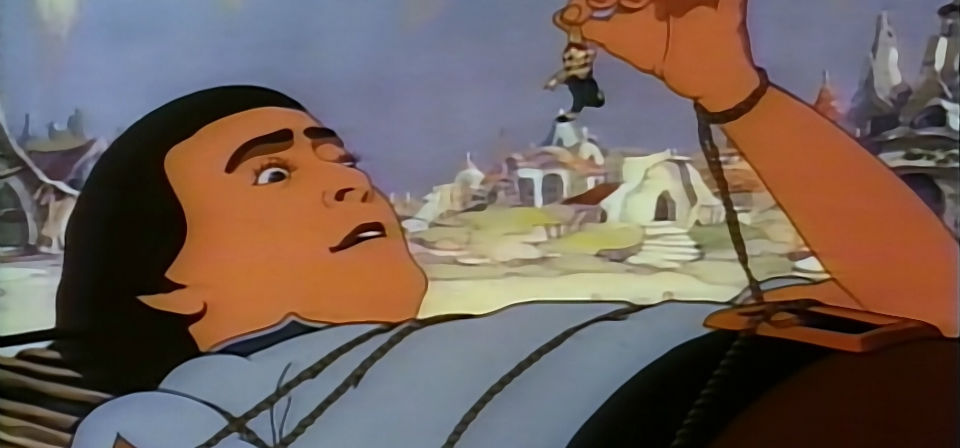
Gulliver’s Travels (1939)
Coming on the heels of Disney’s landmark Snow White, Gulliver’s Travels, from rival Fleischer Studios, is an intriguing case study in the elusive gap between decent work by talented animators and a successful and satisfying film.
Monsters vs. Aliens (2009)
As a tale of female empowerment and male comeuppance, Monsters vs. Aliens might have been provocative, like, 50 years ago. Today, nothing seems more subversive — and unlikely — than a family film with a heroic leading man who’s the equal of the leading lady — one boys can look up to without having to learn a lesson about male weakness. Now that’s a movie I’d like to see.
Bolt (2008)
It’s not quite Pixar grade, but Bolt blots out tepid memories of the likes of Chicken Little and Home on the Range, standing comfortably beside the likes of Kung Fu Panda and Horton Hears a Who in the race for second-best computer-animated family film of 2008.
Return From Witch Mountain (1978)
Better structured and faster-moving than its predecessor, the sequel has more energy and wit in one sequence — the gold theft at the museum, in which a rolling stagecoach and floating manniquins evoke scenes from a Western — than all the special effects in the first movie combined.
Escape to Witch Mountain (1975)
One of the most popular Disney films of its era, Escape to Witch Mountain only loosely follows Alexander Key’s comparatively dark original tale about a pair of troubled orphans escaping a grim juvenile-hall orphanage and a sinister pursuer with the help of a heroic Catholic priest.
Race to Witch Mountain (2009)
Rather than a coming of age story, then, Race to Witch Mountain is a dark family action-adventure movie, with moderate doses of X-Files paranoia and Galaxy Quest sci-fi fandom satire, and a sometimes obnoxious rock soundtrack. It’s slicker, darker and funnier than the original films, though wall-to-wall action makes it a bit of a one-trick pony, and prevents the characters from catching their breath and displaying more than one side.
Oliver & Company (1988)
The last gasp of Disney Animation’s post-Walt malaise before the 1990s Disney renaissance, Oliver & Company borrows names and vague situations from Oliver Twist, but in place of Dickens’s sentiment and Victorian moralizing Oliver has only a misguided stab at “attitude.”
Pinocchio (1940)
Emotionally resonant, visually dazzling, imaginatively captivating, thematically rich, Walt Disney’s Pinocchio may just be the greatest of all the early Disney masterpieces, possibly outshining Snow White, Fantasia and Bambi.
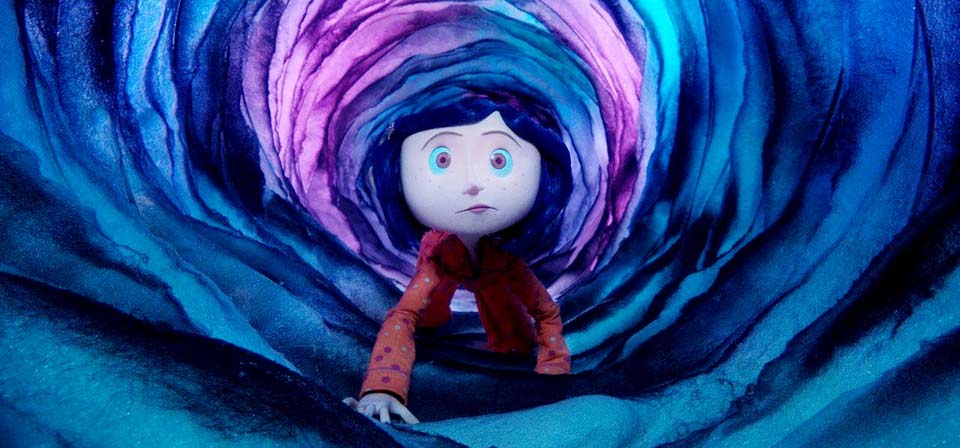
Coraline (2009)
With its dark tale of changeling parents and imprisoned souls, Coraline comes closer to the spirit of the traditional European fairy tale than perhaps any other film, animated or otherwise, in recent memory.
Family Films Move Forward in 2008
Wall‑E is more than another confirmation of Pixar’s moviemaking virtuosity and magic touch with family audiences. It’s the crown jewel in a year that had in some respects had a bit more to offer family audiences from Hollywood than other recent years.
The Tale of Despereaux (2008)
Here is a mouse-hero who is truly serious about honor, devotion and courage, in a movie that feels like a storybook rather than an action movie — a movie that, in addition to honor and devotion and courage, is also about longing, imagination, resentment, contrition, forgiveness and redemption. It’s also a trippy movie in which the kingdom of Dor celebrates the annual Soup Day festival like Mardi Gras in New Orleans, rain magically stops falling when the queen dies and a sort of magical food golem helps the royal chef create new soups.
Madagascar 2: Escape 2 Africa (2008)
Madagascar 2 not only recalls Happy Feet’s satire of religion, it also makes the latter’s coy coming-out subtext look tame compared to its own overt running theme of sexual diversity.

Mr. Bean’s Holiday (2007)
Longtime Bean aficionados may find some of the gags familiar from the TV show and the earlier film. Others may feel (what seems plausible to me) that Atkinson has refined his act and given us “Bean’s Greatest Hits” in their ideal form, culminating in a delightful climax approaching feckless transcendence.
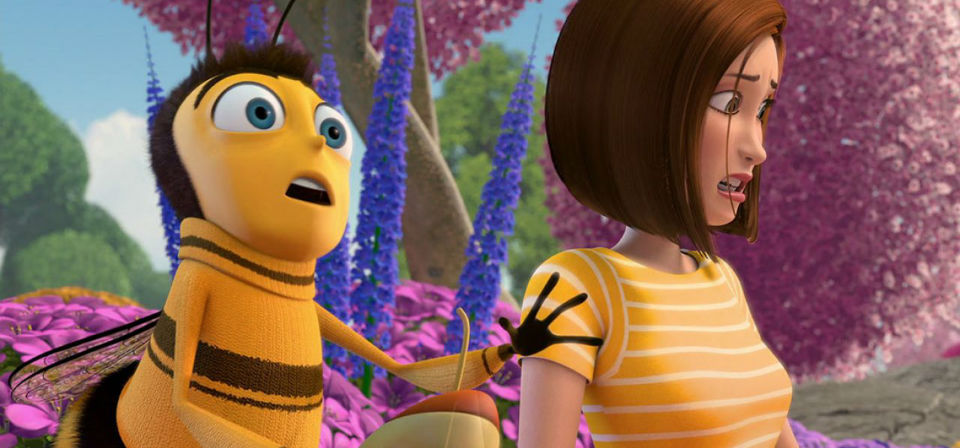
Bee Movie (2008)
As bright-hued as it is dim-witted, Bee Movie is a scattered oddity of a film, combining warm, candy-colored computer-animated visuals, occasionally laugh-out-loud absurdist humor and such profound stupidity about birds and bees — and flowers and trees — that kids watching it will actually lose “facts-of-life” IQ points. Which, for the record, is not a good thing.
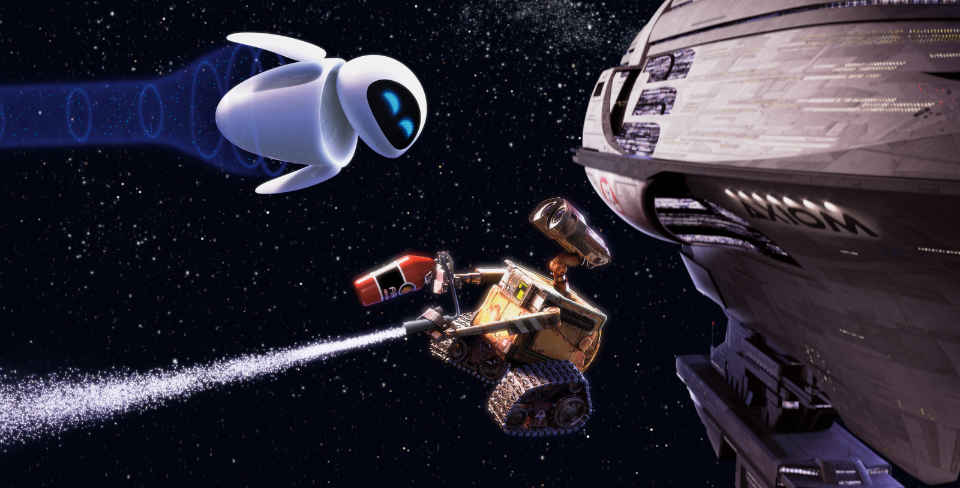
WALL•E (2008)
Even Pixar has never attempted anything on a canvas of this scale. From Monsters, Inc.’s corporate culture to Finding Nemo’s submarine suburbia, previous Pixar films have never strayed too far from the rhythms of real life. … WALL‑E creates a world that, despite clear connections to contemporary culture, looks and feels nothing like life as we know it, with unprecedented dramatic and philosophical scope.
The Spiderwick Chronicles (2008)
The Spiderwick Chronicles is a smart, scary fantasy family thriller that offers depth and meaning in a genre littered with mere competent entertainment. Where films like Zathura and Night at the Museum offer roller-coaster excitement but little more, The Spiderwick Chronicles is actually about something.
Kit Kittredge: An American Girl (2008)
Kit Kittredge: An American Girl is worth seeing in the company of any American girl young enough to watch a G-rated movie in which the protagonist wants to be a reporter rather than get a makeover, become a pop princess or get the cute boy. If you can get away without shelling out for the matching dress, so much the better.
Kung Fu Panda (2008)
The action, though no more realistic than the most cartoony chop-socky movies, is really intense — too intense for sensitive youngsters. For kids up for rolling with the punches, though, Kung Fu Panda may just be DreamWorks Animation’s most entertaining and endearing CGI cartoon to date.
The Chronicles of Narnia: Prince Caspian (2008)
If the first Narnia film got perhaps two-thirds of Lewis’s intended meaning, Caspian is lucky if it gets a quarter. … The upshot is that Caspian is a good-looking fantasy film with some appealing eye candy and comparatively little to do with the book, beyond basic themes of good versus evil and rather generic faith. On that level, if you can put Lewis out of your mind, it’s a pretty good ride.
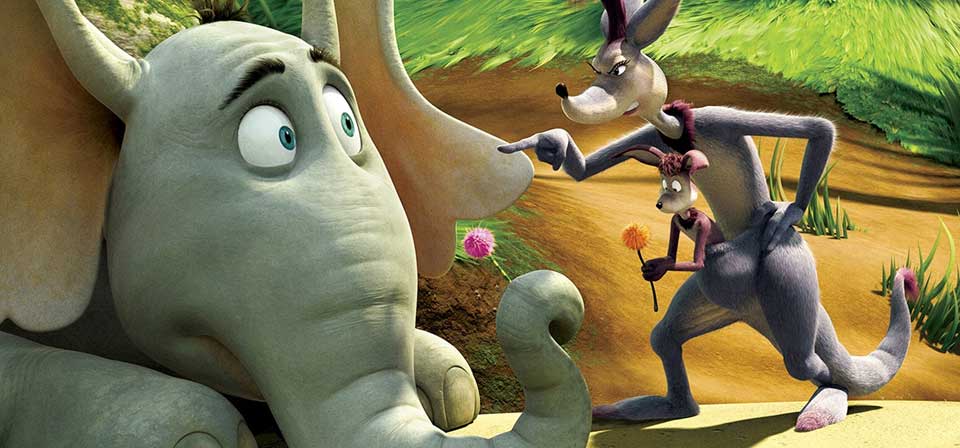
Dr. Seuss’s Horton Hears a Who! (2008)
One book can’t contain Horton’s dogged heroics! / His stoical pluck shows up all other stoics! / And it gets even better! I’m pleased to relate / That Horton’s the very best Blue Sky to date.
Enchanted (2007)
(Written by Suzanne E. Greydanus) Where is the real man here? Giselle’s rapport with Morgan and sweet naiveté are endearing; are we supposed to find Edward’s incompetence and arrogance equally so? Do our female hearts swoon when he checks his teeth in his sword, or boorishly flails it about at everything that moves? Why can’t the prince be an idealized example of chivalry, bravery, strength and honor, as Giselle is of sweetness and goodness?
The Ten Commandments (2007)
Although less speculative and less freely adapted than the earlier film, The Ten Commandments shamelessly rips off interpretive conceits and even specific dramatic beats from The Prince of Egypt, from the menacing of Moses’ basket by a passing croc to the foundering of Ramses’ chariot on the shores of the Red Sea, allowing him to live to see the destruction of his army and the escape of the Israelites.
The Jungle Book (1967)
As interpreted by Disney and director Wolfgang Reitherman, The Jungle Book is essentially a coming-of-age parable about carefree childhood and adult responsibility, embodied respectively by Mowgli’s two mentors, Baloo the bear and Bagheera the panther (Sebastian Cabot).
The Dark Crystal (1982)
Imaginatively ambitious and often visually engaging, The Dark Crystal resolutely remains a distant, uninvolving experience. The filmmakers’ attention seems occupied by the technical challenges of bringing this fictional world to life; characters and emotions, even by the archetypal standards of high fantasy, never come to life, and the overarching mythology seems too self-consciously contrived rather than taking on a mythic reality of its own.

Labyrinth (1986)
Despite some imaginative visuals, such as the Escher-inspired omnidirectional castle at the finale, Labyrinth suffers from a distinct lack of charm, with poorly thought-out characters, limp plotting and a limp climax. Although positioned as a coming-of-age tale, Labyrinth indulges rather than challenges Sarah’s heroic-princess fantasies, with a made-to-order adversary whose whole world, for no very obvious reason, seems to revolve around Sarah.
Arctic Tale (2007)
Arctic Tale is co-presented by National Geographic Films, which released March of the Penguins, and Paramount Classics, which released An Inconvenient Truth, and when it grows up Arctic Tale would like to be both of those films.
Ratatouille (2007)
Ratatouille is a revelation — a delightfully surprising discovery in a genre that seldom surprises even savvy youngsters, a warm and winsome confection that will be treasured by viewers young and old long after the mediocrities of summer 2007 have been justly forgotten.
Evan Almighty (2007)
Harmless, diverting, very mildly uplifting, Evan Almighty offers passable family entertainment meant to appeal equally to Bible-believing conservatives and left-leaning environmentalists.
Shrek the Third (2007)
Shrek the Third continues the deliberate bad taste that is the franchise’s hallmark, with the usual hit-and-miss results… What’s missing is the heart that leavened the first two films.
Happy Feet (2006)
No, it wouldn’t be entirely accurate to call the CGI cartoon Happy Feet an effort to claim penguins for the other side of the culture wars. But it wouldn’t be wholly wrong either.
Bridge to Terabithia (2007)
As with Walden’s recent Charlotte’s Web, the key points of the book are here, for the most part, but hampered by irrelevant “family film” clutter — in this case unmagical fantasy sequences jarringly at odds with the story’s most significant plot point.
Happily N’Ever After (2007)
Ella’s so blindly devoted to the Prince, and so convinced that he’s the one to save the day, that she seems just another swooning groupie rather than a worthy heroine. If she hasn’t any more sense than that, what exactly does Rick see in her? What does that say about him?
Charlotte’s Web (2006)
Competently directed by Gary Winick (13 Going on 30), the film basically sticks to the plot of the book, and the story’s essential charm is echoed in the film. At the same time, the film also dumbs down White with excursions into gimmicky broad humor and bestiary slapstick — something the makers of Babe found unnecessary to do.
Flushed Away (2006)
If Flushed Away doesn’t reach the heights of demented genius of The Curse of the Were-Rabbit or even the lesser charms of Chicken Run, it’s still got a goofy inventiveness that puts it in the better half of this year’s crop of CGI films.
Everyone’s Hero (2006)
As a memorial, Everyone’s Hero is a little, well, forgettable — old-fashioned, sweet, but ultimately disposable family fare with echoes of better films from Toy Story to The Iron Giant.
Lassie (2006)
Lassie is a rare family film that knows that kids live in a grown-up world, that they are not isolated from such realities as unemployment or war, and can relate to the problems of adult characters as well as those of children and animals.
How to Eat Fried Worms (2006)
Thomas Rockwell’s beloved novella How to Eat Fried Worms is a cheerfully disgusting tale of boyhood bravado and rivalry among friends that winds up going too far. The new film version, by writer-director Bob Dolman (The Banger Sisters), transmogrifies this minor classic into an unpleasant endurance test about coping with bullying by humiliating and degrading yourself before the bullies can do it for you, with a trite, tacked-on message of solidarity that’s about as realistic as a package of Gummi Worms.

My Neighbor Totoro (1988)
How can I describe the inexplicable power of My Neighbor Totoro, Hayao Miyazaki’s timeless, ageless family film? It is like how childhood memories feel, if you had a happy childhood — wide-eyed and blissful, matter-of-factly magical and entrancingly prosaic, a world with discovery lurking around every corner and an inexhaustible universe in one’s backyard.
Monster House (2006)
In a way, Monster House is a bracingly icy breath of fresh air, a tween-oriented family film that is unabashedly out to frighten.
Cars (2006)
Cars is Pixar’s most improbable success to date, a film that could easily have misfired, but somehow does not.

Dumbo (1941)
Somebody has to say it: Made at the height of Disney’s early brilliance alongside Snow White and the Seven Dwarfs, Fantasia, Pinocchio, and Bambi, Dumbo is the odd weak link in the chain.
Over the Hedge (2006)
Over the Hedge may satirize suburban foibles, but that doesn’t mean family audiences need to see themselves as the target. Who really likes plastic flamingos, anyway?
Hoot (2006)
Alas, lightning has not struck twice. The similarities between Holes and Hoot only serve to underscore how far short the latter falls from the high standard set by the former.
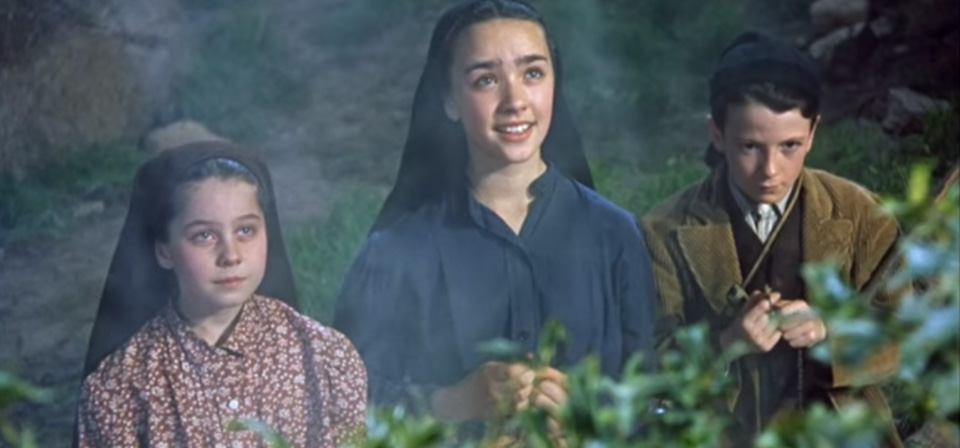
The Miracle of Our Lady of Fatima (1952)
Old-fashioned, reverent, basically faithful to the facts, The Miracle of Our Lady of Fatima never quite emerges from the shadow of the earlier, superior The Song of Bernadette, but it ups the ante with sterner opposition (militant Marxists rather than freethinking civil authorities) and a more dramatic climax.
Ice Age 2: The Meltdown (2006)
Ice Age 2 isn’t really a meltdown, but it’s no bolt from a Blue Sky.
Eight Below (2006)
If Snow Dogs is a fairly typical example of the conventional Hollywood idea of a live-action family film, Eight Below is a typical example of a new trend in family films that includes National Treasure, Hidalgo, Two Brothers, Fantastic Four and The Legend of Zorro. This is a good thing, but not yet good enough.
The Chronicles of Narnia: The Lion, the Witch and the Wardrobe (2005)
One of the most magical effects in Andrew Adamson’s The Lion, the Witch and the Wardrobe isn’t rippling computer-generated fur, ice castles, or battle scenes. It’s the wide-eyed wonder and delight on the face of young Lucy Pevensie (Georgie Henley) as she passes beyond the wardrobe for the first time into the winter wonderland of the Narnian wood.
Harry Potter and the Goblet of Fire (2005)
The fourth of seven projected films based on J. K. Rowling’s ongoing adventures of the boy wizard, Harry Potter and the Goblet of Fire represents the midpoint of the series and of Harry’s schooling at Hogwarts School of Wizardry and Witchcraft.
The Harold Lloyd Comedy Collection
For fans of silent comedy, it’s the DVD event of the decade: Harold Lloyd, the “Third Genius” of silent comedy (Chaplin and Keaton being the other two), until now almost totally unavailable on DVD, at last enters the modern home-video age in grand style with the The Harold Lloyd Comedy Collection.
Zathura (2005)
Light on plot and story logic but strong on narrative thrust and fantastic imagery, it’s the most effective of the three films… Alas, Zathura is also a family film of the contemporary family as well as for it.
Wind in the Willows [Hall/Taylor] (1983)
For atmosphere, for style, for the best evocation of the spirit and feel of The Wind in the Willows, you can’t do better than the Hall/Taylor version.
The Gold Rush (1925)
New from the Criterion Collection, Charlie Chaplin’s comedy classic The Gold Rush is now available on Blu-ray and DVD in a single edition that includes both the original 1925 silent film and Chaplin’s 1942 reworking of the film in a quasi-sound edition, with humorous, documentary-like narration replacing the intertitles.
The Legend of Zorro (2005)
More precisely, it’s a “funny family action film” in the Fantastic Four mold — that is, a movie whose key qualification as kid entertainment is that it isn’t good enough for grown‑ups. Too bad. Our kids deserve better. For that matter, so do we.
Rodgers & Hammerstein’s Cinderella (1965)
There may be no dethroning the Disney cartoon as the definitive musical retelling of the story of Cinderella in the popular imagination; but for my money Rodgers & Hammerstein’s made-for-TV musical is a better take on the timeless fairy tale set in stone by Charles Perrault, and a better introduction to the story for children.
Rodgers & Hammerstein’s Cinderella (1957)
Despite the formidable star power of no less than Julie Andrews, this original version of Rodgers & Hammerstein’s made-for-TV musical Cinderella has been astonishingly neglected, overshadowed by the 1965 version starring Lesley Ann Warren.
Cinderella (1950)
Coming in the wake of a string of early classics — Snow White and the Seven Dwarfs, Pinocchio, Fantasia, Dumbo, Bambi — Disney’s Cinderella represents, alas, the early stages of Disney-itis.
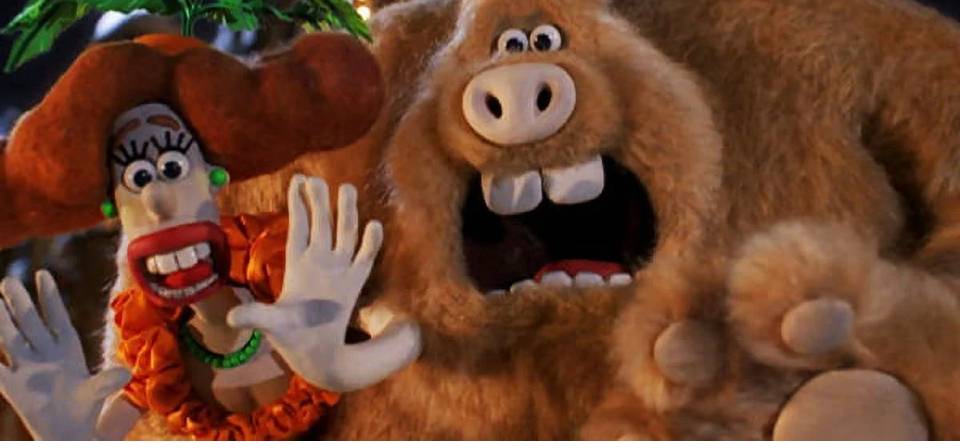
Wallace & Gromit: The Curse of the Were-Rabbit (2005)
Stop-motion animation cult heroes Wallace & Gromit, the brainchildren of British animator Nick Park of Aardman Animations, may not be unchanged in the transition from their charmingly dotty, wildly funny shorts to their first feature-length film, but they’re still recognizably themselves.
The Greatest Game Ever Played (2005)
The Greatest Game Ever Played is perhaps the most visually and emotionally dynamic film ever made about a game of golf — perhaps the most visually and emotionally dynamic possible film about a game of golf.
Corpse Bride (2005)
As imagined by Tim Burton in stunning, wildly stylized stop-motion animation overtly reminiscent of The Nightmare Before Christmas yet technically far beyond it, this macabre fairy tale becomes, variously, a poignant meditation on the daunting weightiness of the vows of marriage, a raucous danse macabre in jumping jazz rhythms and florid colors, a visually rich celebration of Edward Gorey Gothic-Victorian and Charles Addams grotesque, and, perhaps most surprisingly, a touching portrait of tragedy, doomed love, empathy, and sacrifice.
Ben-Hur [A Tale of the Christ] (2003)
In 2003, Charlton Heston reprised his greatest role, if in voice only, in an animated made-for-TV version of Ben-Hur from the director and producers of the animated “Greatest Heroes and Legends of the Bible” series.
Sky High (2005)
Less than a month after Fox’s dumb, trashy Fantastic Four somehow passed itself off as a family-friendly superhero comedy comes Disney’s Sky High, a film that actually fits the bill.
Swiss Family Robinson (1960)
The film simplifies the original story in many ways, reducing the book’s four sons to three and the half-dozen or so homesteads and plantations the Robinsons build to the one famous treehouse. Wyss’s fantastical menagerie, which included penguins, kangaroos, flamingos, lions, and boa constrictors living side by side, is only slightly restrained by a century and a half of scientific advancement, and the book’s strong element of religious devotion and moral discipline is largely reduced in the film to a moment of silent prayer on the beach.
Willy Wonka & the Chocolate Factory (1971)
Along with Chitty Chitty Bang Bang and The 10,000 Fingers of Dr. T, Willy Wonka illustrates the distinct possibility of telling a fairy-tale like story about a child transported to a fantasy wonderland, with brightly costumed little people singing and dancing and strange dangers to be negotiated, yet winding up with a film that is more a fond tribute to "pure imagination" than a triumph of it.

The Incredibles (2004)
The Incredibles is exhilarating entertainment with unexpected depths. It’s a bold, bright, funny and furious superhero cartoon that dares to take sly jabs at the culture of entitlement, from the shallow doctrine of self-esteem that affirms everybody, encouraging mediocrity and penalizing excellence, to the litigation culture that demands recompense for everyone if anything ever happens, to the detriment of the genuinely needy.
Millions (2005)
Millions is a rare and special family film: a moral parable rather than a morality tale; a film that combines high ideals and hard realities; a story of hope and faith in something more than Santa Claus. Which is not to say that Santa Claus, or rather St. Nicholas, doesn’t show up. But when he pops on a bishop’s mitre rather than the familiar red Santa hat, it’s clear we’re not in Hollywood movieland here.
Robots (2005)
Robots combines the visionary alternate world-building of Monsters, Inc., the flair for gadgetry and gimmickry of an old Fleishers cartoon, and most sneakily of all, the toybox nostalgia of the Toy Story movies, with cleverly worked-in toy and game references — “Operation,” Slinky, Wheelo — that will have adults grinning with recognition.
Bambi (1942)
The process of growing and learning is often glossed over in plot-driven coming-of-age films like The Lion King. By contrast, Bambi is about nothing else. With the patient single-mindedness of a child learning to walk or talk, the film focuses on the young deer prince’s repeated attempts to prop himself up on his stilt-like legs, to hop over a log, to say a word, to distinguish one boldly colored or flying thing from another. We see Bambi makes friends, cower at a thunderstorm, discover girls, and, in a defining, indelible scene recalled by subsequent films from The Lion King to Finding Nemo, face crushing tragedy. We watch him go from perplexed distaste at the mysteries of the opposite sex to falling head over heels, and we see him confronted with the implacable necessity of fighting for love.
Because of Winn-Dixie (2005)
Faithfully adapted from the popular Newbery Honor novel by Kate DiCamillo, Because of Winn-Dixie is a good family film frequently verging on being an excellent one, and is quite a bit better than the dog-movie clichés suggested by the trailers.
Thérèse [The Story of Saint Thérèse of Lisieux] (2004)
“Ordinary girl. Extraordinary soul” is the tagline of Thérèse, Catholic actor-director Leonardo Defilippis’s reverent, uplifting, straightforward biopic of the Little Flower. Of the tagline’s two clauses, the film’s special burden seems to be the first part, “ordinary girl.”

The Story of the Weeping Camel (2003)
None of these camel myths seems as curious, improbable, and magical as The Story of the Weeping Camel itself. Presented by National Geographic, the film relates the birth of a rare white camel calf among the herds of an extended family of four generations living under one roof in the wilderness, and of the camel calf’s struggle for survival after its mother, traumatized by the difficult labor, rejects it and refuses to allow it to suckle. How this family of herders deals with this small crisis is an unguessable miracle that will delight children and adults alike.
Lemony Snicket’s A Series of Unfortunate Events (2004)
If you prefer movie reviews about pleasant and uplifting films in which goodness is suitably rewarded, evil is suitably punished, and children are not placed in excessive peril or disagreeable circumstances, you may wish to read some other review.
I Am David (2004)
Why has young David (Ben Tibber) spent most of his short life in a Bulgarian labor camp? He doesn’t know, and neither do we. As the title suggests, I Am David wants us to experience David’s story through the eyes of a young boy who has never known anything but this camp, except for a few flashbulb memories of a fair-haired woman he knew in another life.
Christmas with the Kranks (2004)
What on earth was anyone thinking? Luther’s so Kranky he can’t just skip the Christmas-Eve shindig… he wants a "total boycott," even of charitable donations — despite the fact that they’re saving money on the cruise over against their usual seasonal expenditures. (That his wife Nora, played by Jamie Lee Curtis, absolutely refuses to go along with his plans until Luther caves on the charitable donations is some consolation, but not nearly enough.)
National Treasure (2004)
Nicolas Cage stars as heir to a family of treasure hunters seeking the riches of King Solomon’s temple, discovered by the Crusaders and hidden by the Knights Templar and the Freemasons, who planted clues on the back of the Declaration of Independence.
The SpongeBob SquarePants Movie (2004)
(Written by Jimmy Akin) SpongeBob SquarePants (Tom Kenny) is a sponge who wears square pants and who lives in a town on the ocean floor called Bikini Bottom (get it?). He’s also an ace crackerjack fry cook in a greasy spoon called the Krusty Krab.
Old Yeller (1957)
"It’s not just a dog story," writes Annie Dingus in Texas Monthly, "it’s a rite of passage for American children." She is right. "Who saw Old Yeller?" Bill Murray asks a bunch of American soldiers in Stripes, trying to define our national spirit. "Who cried when Old Yeller got shot at the end? Nobody cried when Old Yeller got shot? I’m sure. I cried my eyes out!" And on NBC’s "Friends," ditsy Phoebe had a sudden unpleasant revelation as she realized that all her life her parents had always turned off the film before the climax, sparing her the film’s heartbreak — but also its life-affirming wisdom.
Lassie Come Home (1943)
The obstacle to this duty, of course, is that Joe’s father Sam (Donald Crisp) is eventually forced out of financial necessity to sell Lassie to the wealthy Duke of Rudling (Nigel Bruce). However, Lassie twice escapes from the the duke’s disagreeable handler Hynes (J. Patrick O’Malley) in order to keep her appointment with Joe, and eventually the duke takes Lassie to an estate in Scotland, over a thousand miles from her home.
Miracle of Saint Thérèse (1952)
Joan of Arc, the warrior-saint who wore men’s garb and was burned at the stake, would at first glance seem to be an odd role model for a girl whose greatest aspiration was to wear the habit of a cloistered nun and who died in the convent of tuberculosis.
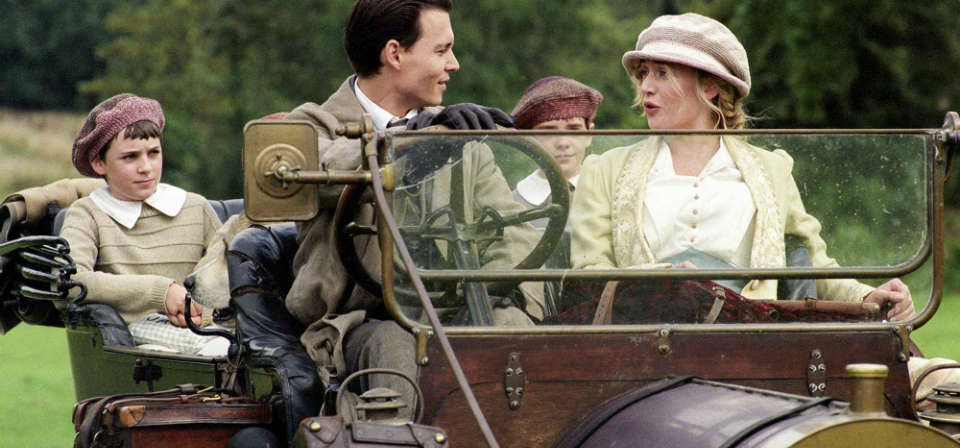
Finding Neverland (2004)
The film depicts Barrie coming into the Llewelyn Davies boys’ lives like Robin Williams into the lives of his students in Dead Poets Society. This isn’t a story about magical childhood soaring where no adult can follow, but about a magical adult imparting the gift of imagination to children.
Peter Pan (1953)
For millions of children and adults, Disney’s Peter Pan is THE Peter Pan, as well as a defining moment in Disney animation, giving the studio its logo mascot, Tinker Bell.
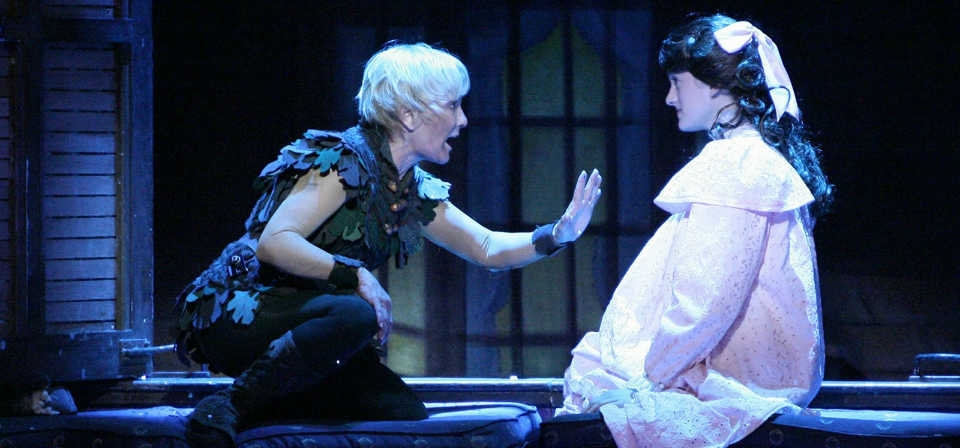
Peter Pan (2000)
It may seem heresy to baby boomers with fond memories of Mary Martin singing and flying on NBC, but this beautifully produced A&E restaging of the musical, starring gymnast-turned-actress Cathy Rigby, eclipses the beloved 1960 Martin kinescope in almost every way.
Peter Pan (2003)
One of the functions of fairy tales is to reflect in an imaginative way truths that, were they presented literally, children might not be ready for, but which they can on some level apprehend and assimilate in this form, and be in some way more prepared emotionally for life. Fairy tales help children grasp what life expects of them, what dangers, adversities, and opportunities they will face. From them children can begin to learn the prudence to avoid the dangers, the fortitude to face the adversities, and the enterprise to seize the opportunities.
Peter Pan (1924)
Continuing a stage convention that would extend to subsequent film versions, Pan is played by a petite woman, teenaged Betty Bronson (hand-picked by Barrie himself), who brings tomboyish energy and dash to the role. Ernest Torrence sneers with foppish malevolence as Captain Hook, and Mary Brian makes a charming Wendy. The stage flying effects work just as well onscreen, and George Ali reprises his delightful costumed animal performances from the stage as Nana and the crocodile.
The Polar Express (2004)
Van Allsburg’s simple story of a nameless, doubting boy who rides a magical train to Santa’s home at the North Pole is fleshed out by introducing us to a few of his young fellow passengers, and also by making the train ride and the visit to the North Pole far more eventful. These additions are fairly consonant with the spirit of Van Allsburg’s work; almost any two minutes of The Polar Express could be a scene in a Van Allsburg story, even if they could never all be squeezed into a single book. Fans of the writer-artist may be pleased to find The Polar Express about as faithful an adaptation of the author’s work as could be imagined in a feature film.
Kiki’s Delivery Service (1989)
A loosely structured coming-of-age story, Kiki’s Delivery Service features one of Miyazaki’s most personable protagonists, a delightful cast of supporting characters, and a rambling, episodic storyline full of charming incident and irresistible imagery.
The Thief of Bagdad (1940)
In this version, the romantic lead who falls in love with the princess is not the titular thief, but a beggar named Ahmad (John Justin) who is actually the rightful king of Bagdad, but has been deposed by his treacherous Grand Vizier Jaffar (Conrad Veidt). The thief, on the other hand, is a mischievous, resourceful lad named Abu (Sabu).
The Thief of Bagdad (1924)
Rivaled only by the awesome Babylonian segments of D. W. Griffith’s Intolerance, Douglas Fairbanks’ lavish, extravagant The Thief of Bagdad ranks as the very pinnacle of silent-era spectacle.
Shark Tale (2004)
Incidentally, DreamWorks’s Shrek and Shrek 2 were based on childhood fairy tales, roughly corresponding to Pixar’s Toy Story and Toy Story 2, which were about childhood playthings. This makes Monsters, Inc. the only Pixar film to date with no DreamWorks parallel (though November will see a second, The Incredibles).
Toy Story 2 (1999)
It’s the best kind of sequel, the kind that neither repeats the original nor merely adds to it, but lovingly builds upon it and goes beyond it into narrative and emotional territory no first film could reach.
Toy Story (1995)
Toy Story, the first-ever fully computer-animated feature and the film that put Pixar Studios on the map, is more than a technical tour de force. It’s moviemaking alchemy — a breathtakingly perfect blend of wide-eyed childhood wonder and wry adult humor, yesteryear nostalgia and eye-popping novelty, rollicking storytelling and touchingly honest emotion.
Grandma’s Boy (1922)
More charming than uproarious, Grandma’s Boy isn’t in the same league as films like >The Kid Brother, Speedy, and Safety Last! However, it’s well structured for its day, and set the pattern for Lloyd’s best comedy features by helping to define the definitive dramatic story-arc for Lloyd’s already-famous “Glasses Character” persona.
Benji Off the Leash! (2004)
Benji Off the Leash is undoubtedly the first dog movie ever made that thinks that a happy ending for a boy and his dog is not for the boy to get to keep the dog, but for the dog to go off to Hollywood to make a motion picture.
Two Brothers (2004)
Annaud’s skill and subtlety elevate what is essentially a simple, fable-like throwback to the sort of live-action feature Disney used to make in the 1950s.
Our Hospitality (1923)
Buster Keaton’s first feature-length comedy is one of his best, a comic gem set against a backdrop of a Hatfield-McCoy style family feud. Raised far from the scene of generations of “McKay-Canfield” violence, young Willie McKay (Keaton) knows nothing about the bad blood between the two families — until the time comes for him to go home and claim his inheritance.
Harry Potter and the Prisoner of Azkaban (2004)
Where its predecessors felt a bit padded and overlong, The Prisoner of Azkaban feels incomplete and overly edited. If the first two films could easily have been tightened up by a half-hour or so, this one left me wishing for the first time that there were an “extended edition” DVD coming, as with the Lord of the Rings films.
Harry Potter and the Chamber of Secrets (2002)
Harry Potter is back, and in this second outing the stakes are higher, the themes darker, the Malfoys nastier, the action grander, the monsters scarier, the gross-outs ickier, the climax stronger, and the movie longer.
Harry Potter and the Sorcerer’s Stone (2001)
Fans of the books will be gratified by a warm rush of recognition at every turn. From the growing anticipation as the mysterious invitations to Harry at the Dursley’s begin their inexorable multiplication, to Robbie Coltrane’s comforting performance as the genial giant Hagrid, to the dazzling Hogwarts grounds, to the exhilarating speed and excitement of Quidditch, the book’s main pleasures have been expertly realized.
Cheaper by the Dozen (2003)
The Gilbreths were certainly disciplined and well-behaved, but there was also something a bit "off" about the whole family, and one could be excused for getting the definite impression that only a professional efficiency expert like Mr. Gilbreth could even think about having so many offspring.
Little Women (1933)
Part comedy of manners, part morality tale, it’s more interested in its heroines “conquering themselves” than in a man conquering their hearts.
Home on the Range: The Last Roundup for Disney Animation?
Is Home on the Range really the final entry in the canon of Disney’s traditional hand-animated feature films — a body of work that goes back to Snow White and the Seven Dwarfs and includes such landmarks as Fantasia, Pinocchio, and Beauty and the Beast?
Clifford’s Really Big Movie (2004)
Reviewed by Sarah E. Greydanus, age 9, and Steven D. Greydanus
The Life and Passion of Jesus Christ (1905)
The Life and Passion of Jesus Christ is a remarkable relic from the very dawn of cinema.
Miracle (2004)
Miracle manages the neat trick of establishing this game as much more than a game without making it all about politics or turning the Soviet players into ideological bad guys. Like Seabiscuit, with its Depression-era tale of a scrappy underdog racehorse taking on the much-favored champion thoroughbreds, Miracle establishes its setting in a time when American spirit is at a low ebb and people are ready to rally behind an underdog hero who can help them believe in comebacks and David-and-Goliath upsets.
Good Morning (1959)
Formality and courtesy attend adult interactions, but beneath the surface lurk petty misunderstandings, resentments, suspicions. A boy complains that adult conversation is bloated with meaningless, empty pleasantries, while his friends prefer to engage each other with an amusement that appears to be an Asian equivalent of “Pull my finger.”
Agent Cody Banks 2: Destination London (2004)
Unfortunately, while this sequel is the least morally problematic of Muniz’s three big-screen outings, it’s also far and away the lamest, lacking utterly its predecessors’ fitful humor and excitement. When the high point of your movie involves a Queen Elizabeth lookalike getting down to a youth-orchestra Euro-pop version of Edwin Starr’s "War," something has gone disastrously wrong.
Spellbound (2003)
Spellbound, Jeffrey Blitz’s endearing, heartbreaking, deeply rewarding documentary about eight brainy middle-school kids competing with nearly 250 other spellers in front of the ESPN-watching world, is full of such unforgettable moments. Not just a documentary of a contest, Spellbound is a behind-the-scenes look at the lives of contestants of various regional and socioeconomic backgrounds whose only common bond is a facility with putting words together.
A Christmas Story (1983)
Like many Christmas-themed movies, it offers no insight into the true meaning of Christmas, but it brims with insight into the human condition — particularly the condition of boys at Christmastime.
Piglet’s Big Movie (2003)
With Piglet’s Big Movie, Pooh finally returns to his roots, bringing three of Milne’s original tales to the screen for the first time in an anthology-style story. Framed as a series of flashbacks in a story with Pooh and his friends searching for the missing Piglet, the movie recalls the tales of Christopher Robin’s expedition to the North Pole, the house at Pooh Corner, and the arrival of Kanga and Roo in the Hundred Acre Wood. Running through all three episodes as well as the framing story is the film’s unifying theme, little Piglet’s big heart and heroism.
Teacher’s Pet (2004)
(Review by Jimmy Akin) Teacher’s Pet is the story of a boy and his dog. It’s not the usual boy and his dog story, though. In this case, the dog wants to be a boy. And in this movie, he gets his wish.
Return to Never Land (2002)
Return to Never Land is Peter Pan Lite, if I can say that without conjuring images of low-fat peanut butter.
Winged Migration (2001)
Director Jacques Perrin and his crew of pilots and cinematographers spent four years traversing the globe, capturing unprecedented images of migratory birds in flight and on land. Shooting from hot-air balloons and ultralight aircraft, the filmmakers insinuate the camera’s eye so intimately into the midst of airborne flights of birds that one can almost count the hairlike barbs on the feathers. Other times, one is staggered by the sheer number of birds captured in a single shot, sweeping across the sky like a curtain being drawn or covering an island to the horizon and the edges of the screen.
The Chronicles of Narnia (1988‑1990)
Beautiful, rugged UK landscapes, splendid old castles and other shooting locations, and some fairly impressive sets help create a sense of authenticity. At the same time, with the earlier episodes especially limited by modest production values, rudimentary special effects, and uneven acting, the Chronicles can’t be held even to the standard of such American TV productions as the Merlin and Arabian Nights miniseries.
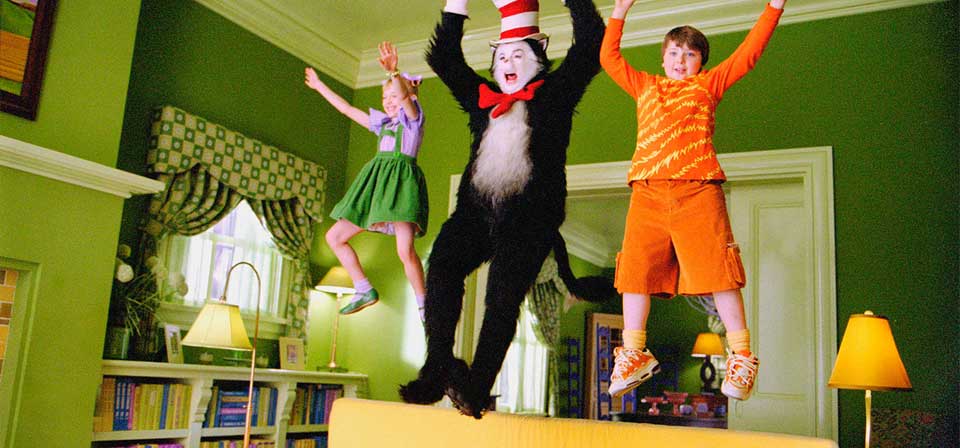
The Cat in the Hat (2003)
Yes, the Cat now has mojo — yeah, baby, groovy! / Except he goes “OH yeah!” instead in this movie. / What’s next? Will the Sneetches get wild and crazy? / Will the Lorax get jiggy with Daisy-Head Mayzie?
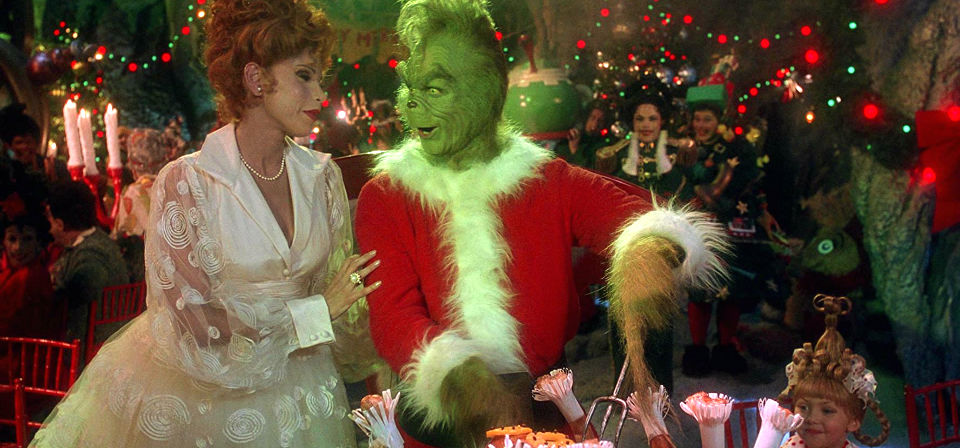
How the Grinch Stole Christmas (2000)
By the time that you read this short essay of ours / The Grinch will have made ten squintillion more dollars! / The people have spoken! The Grinch is a hit! / So who cares if some critic writes critical crit?
Scooby-Doo (2002)
Scooby Dooby Doo
And Shaggy too
You both look and sound great.
But Daphne, you’re too Buff
Fred thinks he’s tough
And Velma — wow, you’ve lost weight!
The Santa Clause 2 (2002)
Like those MasterCard ads that, while admitting that “there are some things that money can’t buy,” still manage to suggest that even these things are somehow among the many benefits of using MasterCard, The Santa Clause 2 is strangely reticent about the idea that Christmas is ultimately about anything other than presents from the red-suited guy.
The Wild Thornberrys Movie (2002)
(Written by Jimmy Akin) The film is a mixed success. Fans of “The Wild Thornberrys“ will enjoy it, but it doesn’t have much ability to reach beyond its core audience.
Looney Tunes: Back in Action (2003)
(Written by Jimmy Akin) Kids will definitely want to see it, as will die-hard adult fans of the Looney Tunes characters. For their purposes, the movie is a resounding success. It gives us a big screen adaptation of the Looney Tunes characters which is faithful to the characters we grew up with. Their comic sensibilities are the same, the timing is the same, even many of the jokes are the same. And that’s part of the problem: There is a little too much sameness about all this.
Brother Bear (2003)
(Co-written with Suzanne E. Greydanus) Based on a long-unfinished project dating to the New-Age / ultra-PC heyday of Disney’s ’90s renaissance, Brother Bear outdoes even Pocahontas and Atlantis: The Lost Empire with its New-Age mysticism and eco-spirituality gospel message.
Robin Hood (1973)
Oo-de-lally! As post-Sleeping Beauty Disney animated features go, Robin Hood is a fine entry, better than The Sword in the Stone or The Fox and the Hound but not as good as The Jungle Book or The Many Adventures of Winnie the Pooh.
Something Wicked This Way Comes (1983)
This line from Macbeth, quoted by small-town librarian Charles Halloway (Jason Robards), perfectly evokes the unsettling milieu of Ray Bradbury’s dreamlike thriller about a creepy carnival coming to a small Illinois town. Significantly, this line is immediately followed in the film by the following verse from Longfellow, also quoted in the book:
The Many Adventures of Winnie the Pooh (1977)
In retelling these tales, the Disney animation house inevitably, yes, Disneyfied Milne’s creations, as it did everything it touched, from the dwarfs in Snow White to the satyr in Hercules.

Sleeping Beauty (1959)
A worthy successor to the early classics Snow White and Pinocchio, Sleeping Beauty is the one great fairy-tale adaptation of Disney’s post-war period, outshining Cinderella and unrivaled until 1991’s Best-Picture candidate Beauty and the Beast.
Good Boy! (2003)
Take Two: The genial, blandly amusing tale celebrates the bond between man and dog, and occasional mildly crude humor is limited to flatulence jokes and the like. Kids won’t notice, but attentive parents will be irked that the filmmakers saw fit to insert fleeting depictions of an apparent homosexual couple in the supporting cast.
Secondhand Lions (2003)
In the end, though, Secondhand Lions is a pleasant and entertaining film that’s neither as demanding nor as satisfying as the superior Holes. The setup promises more early conflict than the first act delivers, and the story-arc doesn’t give the protagonist enough to do. Beyond that, the film gestures at moral lessons it never quite fleshes out or illustrates, and what ought to have been a key plot point is relegated to a tacked-on coda, depriving it of the crucial significance it should have had.

What’s Up, Doc? (1972)
Yet where Hepburn’s character was merely flighty, Judy Maxwell exists, like the Cat in the Hat and Bugs Bunny (note the title line and the carrots she munches in one scene), in the mode of the Trickster archetype, with inscrutable motives, capricious behavior, and almost preternatural abilities, capable of whimsically making Bannister’s life a living nightmare — or putting things to rights again at a moment’s notice.
Holes (2003)
Holes manages that rare trick of faithfully evoking what was special about the book without becoming slavish or by-the-numbers. Davis captures the book’s blend of coming-of-age realism, tongue-in-cheek grotesquerie, fantasy, and adventure, and capably navigates the plot’s multiple timelines and settlings.
Animals are Beautiful People (1975)
Highlights include daredevil cartwheeling baboons, the remarkable partnership of the badger and the honey-guide bird, and the astonishingly intricate lengths to which the Kalahari bushmen go to find water. There’s a sequence with the animal residents of the fertile Kavango flood plains intoxicated on fermented fruit, and footage of an ostrich mating dance that strikingly resembles Fantasia’s animated ostrich ballet.
The Rookie (2002)
There’s an easygoing, folksy charm to this film, accentuated by a country-themed soundtrack and characters who say such things as “I’m gonna need a longer street for that talk” and “Lord knows I’m ready for both sides of the bed to be warm again.”
Rugrats Go Wild! (2003)
(Written by Jimmy Akin) When Cartoons Collide!!! That’s what they could have used as a tag-line for Rugrats Go Wild.
Rugrats in Paris (2000)
(Written by Jimmy Akin) The second Rugrats movie begins with a wedding: little Tommy Pickles’ widowed grandfather, Lou, is finally marrying his late-in-life flame, Lulu.
The Rugrats Movie (1998)
(Written by Jimmy Akin) Changes are coming to the pastel-colored Rugrats universe, and The Rugrats Movie brings them. It is the biggest thing that has happened to the series in its nearly ten year run: a new Rugrat is being born.
The Wind in the Willows [BBC-Unwin] (1996)
Like the Peter Rabbit episodes, The Wind in the Willows begins and ends with charming live-action sequences, this time featuring a narrator (Vanessa Redgrave) telling the story to some children. Once again episodes and dialogue are drawn straight from the source material, though with Grahame’s much longer story more editing has been necessary. The animation, though less striking than Peter Rabbit’s lovely watercolor backgrounds, evokes the classic illustrations of Ernest Shepard.
The World of Peter Rabbit and Friends (1993)
With evocative watercolor backgrounds and character design strongly reminiscent of Potter’s illustrations, animation ranging from fine to excellent, and dialogue and narrative drawn straight from the source material, the series is remarkably faithful to the text, spirit, and look of Potter’s beloved stories.
Freaky Friday (2003)
(Co-written with Suzanne E. Greydanus) In the very end there’s a scene in which Anna’s grandfather (thrown into the movie as a hard-of-hearing joke) is lamenting that “youth is wasted on the young.” Too bad the makers of this new Freaky Friday forgot that.
Atlantis (1991)
Loosely structured into thematic "chapters" such as "light," "rhythm," and "grace," accompanied by an ecclectic Eric Serra score, Atlantis is a documentary Fantasia, a poetic marriage of image and music (though the score, apart from an aria from Bellini’s La Sonnambula, lacks the pedigree of Disney’s masterpiece). Marred only by a brief opening voiceover, which muses pretentiously about man’s evolutionary origins in the ocean, Besson’s otherwise wordless film lets the beauty of the undersea world speak for itself.
Spy Kids 3-D: Game Over (2003)
If Spy Kids 3-D: Game Over were consistent, that protest would become Juni’s mantra, repeated every thirty seconds or so from that point on until the end of the film. Then again, if Spy Kids 3-D were consistent — about anything at all — it might actually start making some kind of sense.
Blackbeard’s Ghost (1968)
Highlights include an ominous retelling of the story of Blackbeard’s curse and a slapstick scene pitting the heroes against the gangsters. Undeniably silly and somewhat dated, Blackbeard’s Ghost remains harmless, modestly entertaining family fare.
Spy Kids 2: Island of Lost Dreams (2002)
In the original Spy Kids, dashing spy parents Gregorio and Ingrid Cortez (Antonio Banderas and Carla Guigino) exchanged the glamorous world of espionage for the even greater adventure of raising a family. Their children Carmen and Juni (Alexa Vega and Daryl Sabara) weren’t actually "Spy Kids" — a term that in the movie actually applied to a line of robotic child warriors designed by the only somewhat sinister Fegan Floop (Alan Cumming) — but became entangled in their parents’ exotic former life when the latter were captured by Floop’s forces.
Spy Kids (2001)
The press kit calls it "James Bond for kids," but this over-the-top fantasy romp might be more accurately described as a family-friendly True Lies: The Next Generation, or even a married-with-children Austin Powers — all with Willy Wonka-style wonkiness and inspired set design straight out of Dr. Seuss.
The Song of Bernadette (1943)
Based on the historical novel by Jewish author Franz Werfel, the beloved classic The Song of Bernadette stands head and shoulders over most religiously themed fare from Hollywood’s golden age.
The Emperor’s New Groove (2000)
The Emperor’s New Groove is really about another new groove — Disney animation’s. By 2000, the old Disney-as-usual wasn’t selling any more, and Disney was ready to begin trying new things.
Hey Arnold! The Movie (2002)
(Written by Jimmy Akin) Nickelodeon’s animated "Hey Arnold!" TV series, created by the Snee-Oosh animation house, is one of the better cartoon shows around.
Jonah: A VeggieTales Movie (2002)
(Review by Mark Shea) I know. It sounds uninspiring on paper, if you haven’t seen them. But — you gotta trust me on this — these guys are really funny, a sort of strange brew mixing Monty Python, MTV, your third grade Sunday School teacher and a tiny bit of Robin Williams — all with a G rating.
The Powerpuff Girls Movie (2002)
(Review by Jimmy Akin) The City of Townsville… is in desperate need of heroes!
Treasure Planet (2002)
(Written by Jimmy Akin) Treasure Planet is Robert Louis Stevenson meets George Lucas. More specifically, it’s Treasure Island meets The Phantom Menace.
Nickelodeon’s “Hey Arnold!” Series is Good Television
(Written by Jimmy Akin) "Hey Arnold!" — the television series — is different. It manages to keep its low-key, kid-friendly tone while still turning in episodes that are entertaining and even witty.
Cats and Dogs (2001)
Not that I’ve anything against cats. But there’s a particular breed of cat fancier who looks down at dogs precisely for qualities like their obedience, loyalty, and desire to please, explicitly preferring the fierce independence and proud impassiveness associated with cats. I wonder whether this kind of cat appreciation isn’t often rooted in a misguided human ideal — whether such people don’t prefer cats because they themselves like the idea of being remote and independent.
The Mighty (1998)
Based on the children’s book Freak The Mighty, Peter Chelsom’s less oddly named The Mighty tells the story of a remarkable friendship between two young boys, both outcasts. Max (Elden Ratliff) is dull-witted but intimidating; Kevin (Kieran Culkin) is bright but crippled by Morquio’s Syndrome.
What a Girl Wants (2003)
Despite these similarities, What a Girl Wants differs from The Princess Diaries in three important respects, all of which are, as far as they go, good ideas.
The Princess Diaries (2001)
Everyone knows going in that Hathaway’s frizzy hair, horn-rimmed glasses, pratfalls, slouch, and puckered expressions aren’t going to hold her back for long. (Indeed, it takes a formidable effort to suspend one’s disbelief and accept that they hold her back at all. Hathaway manages to be suitably awkward in the medium shots, but every closeup blows the girl’s cover by revealing her cover-girl beauty. Casting the gorgeous 20-year-old "Get Real" actress as an 15-year-old ugly duckling is about as plausible as Jennifer Lopez playing a wedding planner who can’t get a date or Drew Barrymore playing a late bloomer who’s Never Been Kissed.)
Agent Cody Banks (2003)
Welcome to our second annual Spring Frankie Muniz Morally Problematic Spy Kids Rip-Off Movie, featuring hilarious hijinks offending each year against a different one of the Ten Commandments.
The Jungle Book 2 (2003)
The voices are different, but the story is the same.
Ice Age (2002)
The lion’s share of the credit for Ice Age goes to the sloth.
Tuck Everlasting (2002)
The story, originally set in 1880 but moved to 1914 for the movie, concerns a sheltered young girl from a well-to-do family who is called "Winifred" by her overprotective parents and grandmother, and might be called "Winnie" by her friends if she had any. Winnie (Alexis Bledel of TV’s "Gilmore Girls") is so timid that when she decides to run away from home, she heads for the family-owned woods adjacent to her house, never actually setting foot off her parents’ property.
Stuart Little 2 (2002)
Remarkably, Stuart Little 2 manages to be both more satisfying for adults and more kid-friendly than the original. Older viewers will appreciate the sequel’s stronger story and witty script; and even little kids who might have found the original film’s menacing Central Park gangster cats too intense may be able to watch this film’s villainous falcon without fear of bad dreams.

Lilo & Stitch (2002)
Lilo & Stitch is a unique imaginative achievement that succeeds in its own right, without laying down any kind of template for future films to follow. Attempts to repeat its success, to make it into a formula, would be a dismal failure, unless perhaps the formula were to be "Give the creative people room to try something new and let them work without a safety net." What a concept.
Spirit: Stallion of the Cimarron (2002)
A strangely grim indoctrination into the politics of victimization, Spirit apparently expects kids to slog willingly through scene after scene of this stuff, not because it’s all such fun to watch, but because the filmmakers are so sure it’s Good For You.
The Straight Story (1999)
We hear a few anecdotes about Alvin’s life, but nothing meant to make us say, "Aha — so that’s why…" The only "explanation" comes in the very last moments of the film, when we finally see for ourselves the point of Alvin’s determination to make the journey his own way; why he couldn’t accept a kind stranger’s offer to drive him the rest of the way.
The Prince of Egypt (1998)
Witness the astonishing animation of scale at work in capturing the towering monuments of Egypt, or the host of departing Hebrews: few if any traditional animated films have ever captured the sheer sense of size in this film. Watch the subtle storytelling in an early scene as the infant Moses, caught up in the Queen’s arms, eclipses the toddler Ramses in her line of vision, leaving him standing there with outstretched arms; foreshadowing the rivalry and ultimately the enmity between the heir to the throne and his Hebrew foster brother. Notice the small details in those quiet numinous moments: the pebbles rolling back at Moses’ feet at the burning bush; the halo of clear water around his ankles as the Nile turns to blood; the horror of an Egyptian servant as the surface of the water bubbles and the first frogs begin to flop out of the river onto the palace stairs; an extinguished candle flame or an offscreen sound of a jar crashing as the destroying angel swirls in and out among the Egyptians.
The Nightmare Before Christmas (1993)
Despite the macabre humor, there’s something touchingly innocent about Halloweentown. Its inhabitants live for fear and thrills, yet there’s no real malice in any of them — with the exception of a sort of Halloween outlaw named Mr. Oogie Boogie and his three young protégés.
Monsters, Inc. (2001)
The world of Monsters, Inc. is a more artificial and contrived affair than the Toy Story world, and something of the figure of the Monster in myth and fairy tale and imagination has been lost. Yet there’s also a slyly satiric point: Childhood fears aren’t what they used to be.
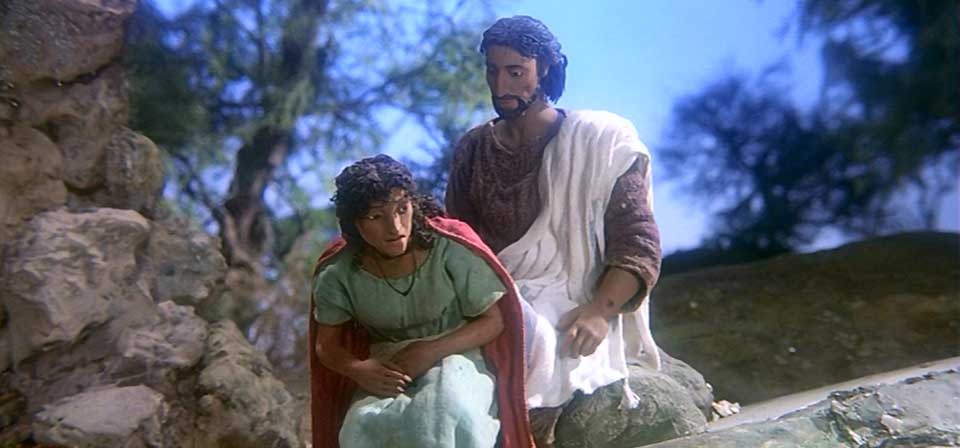
The Miracle Maker (2000)
Fiennes sounds like a man improvising a public speech as he delivers long-familiar words about the house on the rock or the parable of the mustard seed. His Jesus is attractive, composed, commanding, and compassionate; he can rise to righteous anger (as at the cleansing of the temple), but has an acute sense of humor (seen particularly in satirical parables such as the log in the eye).
Joseph: King of Dreams (2000)
Joseph’s own dreams — the two biblical ones plus an extra one — are the best; I caught my breath at the first glimpse of these dreams, which look like living, flowing Van Goghs. The dream-sky swirls like Starry Night, and the grass ripples under the dream-Joseph’s feet like ripples in a pond. The dreamlike quality of these sequences is undeniable and memorable.
The Flintstones in Viva Rock Vegas
I think that a similar dynamic may be at work in The Flintstones in Viva Rock Vegas, a prequel to the 1994 film that purports to tell us how young Fred and Barney first met and married Wilma and Betty (respectively). Kids may happily gobble up Viva just because it’s a movie based on a popular cartoon show; and even parents desperate for watchable family entertainment may allow themselves to be seduced by its colorful set pieces and the goofy charm of the cast. But really, it’s not at all good. Not so much nasty, like coffee ice cream to a child; but rather bland, inert, and joyless, like some insipid sugar-free fat-free Frozen Dessert Product.

Fantasia (1940)
If Fantasia failed to spark a hoped-for entertainment revolution, its achievement is all the more starkly singular. A joyous experiment in pure animation, an ambitious work of imaginative power, a showcase of cutting-edge technique, and a celebration of great music, it is without precedent and without rival. I’ve watched it far too many times to count, and I have yet to begin tiring of it.
E.T. The Extra-Terrestrial (1982)
“The story of a boy and his dog,” writes one critic. “Close Encounters for kids,” writes another. Still others focus on the Christological resonances, particularly in connection with another messianic sci‑fi film, The Day the Earth Stood Still, with its peaceful visitor from the heavens who dies and rises again.
Come to the Stable (1949)
The bishop (Basil Ruysdael) is a decent enough chap, sympathetic to the sisters’ mission but daunted by the practical difficulties. As their cause goes forward, however, he begins to suspect that what’s driving them is an irresistible force before which there is no known immovable object: "There hasn’t been for 2000 years."
Chicken Run (2000)
Real chickens, I have it on expert testimony, are homebodies who do not actually pine for freedom, as do the heroines of Chicken Run. Whereas these poultry-farm prisoners plot and scheme endlessly to contrive by any means necessary to get under, over, or around their chicken-wire prison wall, my wife’s hens actually perch atop the five-foot fence that surrounds our back yard. They are quite capable of escaping, but have no interest in doing so.
A Bug’s Life (1998)
Pre-DecentFilms capsule review
Big Fat Liar (2001)
In the end, when the parents realize all their son went through to win their trust, they can’t help but be proud of him. Another touching Hallmark moment brought to you by a Hollywood committee, none of whom has any children or parents of their own, or knows anyone who does.
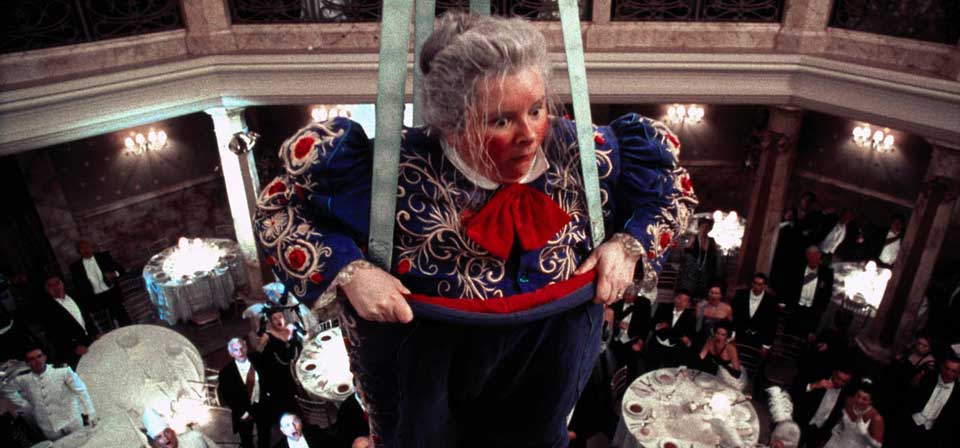
Babe: Pig in the City (1998)
As an enthusiastic fan of the first Babe, I wanted to believe in the sequel, even if it did turn out to be too dark for young kids. After all, Miller was also the screenwriter and producer for the original film, directed by Chris Noonan. So I came to Babe: Pig in the City with high hopes.

Babe (1995)
The judges rating the pig’s performance might as well be grading the entire movie. Babe is a perfect 10.
Atlantis: The Lost Empire (2001)
Directors Gary Trousdale and Kirk Wise (Beauty and the Beast) keep things moving fast enough to keep them from getting boring, and there are a few laughs along the way. Yet what could have made adequate summer entertainment for older kids and parents with low expectations is ultimately undone by pervasive echoes of New-Age pop spirituality and neopaganism in the film’s imagery and themes.
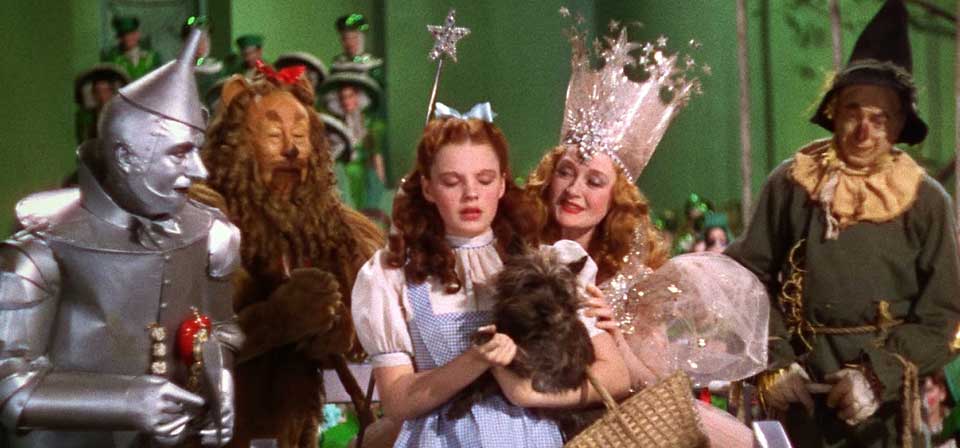
The Wizard of Oz (1939)
The Wizard of Oz is one of a very few shared experiences that unite Americans as a culture, transcending barriers of age, locale, politics, religion, and so on. We all see it when we are young, and it leaves an indelible mark on our imaginations. We can hardly imagine not knowing it. It ranks among our earliest and most defining experiences of wonder and of fear, of fairy-tale joys and terrors, of the lure of the exotic and the comfort of home.
G-Force (2009)
Parents may be interested to know that the movie tie-in toys are equipped with sound and movement as well as gear. Will the toy Blaster say things like “Pimp my ride!” and “That was off the hizook!” like he does in the movie? Will the toy Juarez riff on the Pussycat Dolls line “Don cha wish your girlfriend was hot like me”? Will the toy Darwin say “Yippie kay yay, coffee-maker!”? There’s a click moment waiting to happen in another ten or fifteen years (hopefully not before that).
Recent
- Benoit Blanc goes to church: Mysteries and faith in Wake Up Dead Man
- Are there too many Jesus movies?
- Antidote to the digital revolution: Carlo Acutis: Roadmap to Reality
- “Not I, But God”: Interview with Carlo Acutis: Roadmap to Reality director Tim Moriarty
- Gunn’s Superman is silly and sincere, and that’s good. It could be smarter.
Home Video
Copyright © 2000– Steven D. Greydanus. All rights reserved.